Samsung Q80D is a very versatile television. It’s definitely a piece of equipment that can easily adapt to the needs of both gamers and those looking for a device for everyday viewing. As for the former - namely gamers. Thanks to HDMI 2.1 support, a 120 Hz refresh rate, and low input lag, it makes playing on console or PC pure pleasure. Additionally, the Game Bar feature allows for quick adjustments without the need to exit the game – a small thing, but it makes a difference. It’s also worth mentioning a fantastic feature in the form of an efficient motion smoother that works well in games. It gives the impression that playing on such a television adds a few FPS, thus providing an advantage in the game. During everyday use, the Q80D performs very well too. The Tizen system offers access to popular apps such as Netflix, Prime Video, and Disney+, so nothing is lacking here. The high brightness of the screen ensures that the television performs very well even in well-lit rooms. A nice and interesting addition is the solar remote, which not only does not require battery replacements but also allows control of other devices (e.g. set-top boxes, consoles, soundbars). When it comes to picture quality, the Q80D has a lot to offer. Although it lacks Dolby Vision support, after calibration, the colours look fantastic, and the contrast and black level thanks to FALD technology (full array local dimming) impressed us greatly, considering the television's segment. Thanks to the VA panel enhanced with quantum dots (QLED), the colours on the Q80D can look truly excellent. Watching movies or series in the evening is a real pleasure – especially if we care about good details. However, there are little things that might be bothersome. The lack of a recording feature is a certain limitation, although it may not be a problem for everyone. Another obvious issue will be its viewing angles. These are typical results for this type of panel, so one must reckon with the fact that at the cost of great blacks, the Q80D simply performs average when looked at from the side. Nevertheless, the Samsung Q80D is a great television that performs well in every situation. It offers excellent picture quality, many useful features, and solid build quality for its price range. A few minor shortcomings, however, do not take away its charm, as overall it’s a model that will comfortably meet the expectations of most users – both those who game on consoles and those who simply enjoy evening screenings with good visuals.
- Matching (Score)
- Our verdict
- TV appearance
- Where to buy
- Contrast and black detail
- HDR effect quality
- Factory color reproduction
- Color reproduction after calibration
- Smoothness of tonal transitions
- Image scaling and smoothness of tonal transitions
- Blur and motion smoothness
- Console compatibility and gaming features
- Input lag
- Compatibility with PC
- Viewing angles
- TV efficiency during daytime
- Details about the matrix
- TV features
- Apps
- Playing files from USB
- Sound
Samsung QLED Q80D vs SONY BRAVIA 3
Direct compare
Q80D
BRAVIA 3 / K-(XX)S3

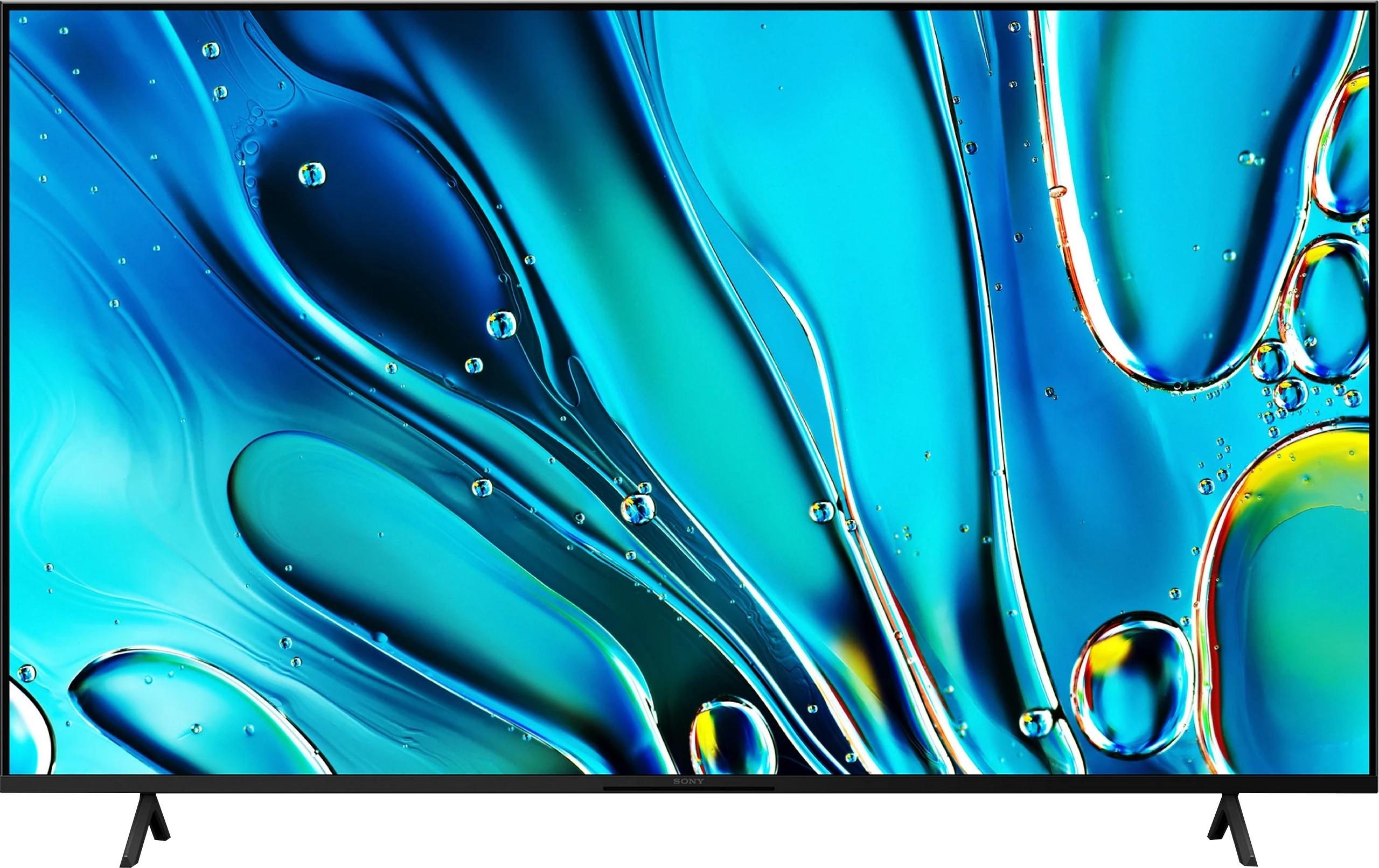
Panel type: LCD VA
Resolution: 3840x2160
System: Tizen
Model year: 2024
Complete the survey to find out the result

Panel type: LCD IPS
Resolution: 3840x2160
System: Google TV
Model year: 2025
Complete the survey to find out the result

Overall rating
7.1
6.0
Movies and series in UHD quality
6.8
5.4
Classic TV, YouTube
6.7
5.3
Sports broadcasts (TV and apps)
6.6
5.7
Gaming on console
8.7
6.4
TV as a computer monitor
7.6
6.0
Watching in bright light
6.0
4.9
Utility functions
8.0
6.6
Apps
8.7
9.6
Sound quality
6.6
6.5
Complete the survey to find out what fits your preferences
Advantages
Great choice for gamers - lots of functionality, low input lag, 120Hz
High brightness of the panel - good performance during the day
Good blacks and contrast - VA panel with local dimming
Excellent tonal transitions
Advanced "Tizen" smart system
Pleasant sound from the built-in speakers
Google TV system – a massive library of apps and services
IPS panel with good viewing angles
Improved colours – (91% of the DCI-P3 colour gamut)
Dolby Vision support
Good upscaling – lower quality materials look surprisingly good
Great input lag and ALLM mode
Very good PC compatibility – supports chroma 4:4:4, excellent font readability
Two remotes included – a modern minimalist one and a classic one with a numeric keypad
Very good built-in media player – supports a wide range of files, even less common ones like HEIC
Slim bezels and modern design – a definite step up from the X75WL
Dolby Atmos and DTS:X support
Disadvantages
Average viewing angles
No recording function
No DTS (may hinder connection to home theatre)
Tragic black - IPS panel without local dimming
Limited brightness (approx. 350 nits), HDR mode image is not very appealing
Issues with backlight uniformity
Google TV system can be sluggish
No recording function from built-in tuners to USB memory
Our verdict
Sony Bravia 3 is a television that brings several important improvements over its predecessor while still staying true to its core. The biggest change is the design – slim bezels and sturdy metal legs make it look modern and fit much better in a living room than the X75WL. The improved colours thanks to the PFS filter and really good upscaling are also a plus. It is particularly with lower-quality content, especially in classic SDR, that the Bravia 3 can show its best side – colours look pleasant, the picture is clear, and thanks to the IPS panel, viewing angles are at a very good level. For a ‘classic’ TV, where comfort from various viewing positions in the room and decent quality of everyday content matter, it is perfectly suitable. A huge advantage remains the Google TV system. During our tests, there were times when the interface did not work as smoothly as we would have liked, and some features could freeze. However, despite these imperfections, the presence of Google TV is a huge plus – access to thousands of apps and a full streaming library compensates for minor shortcomings. Unfortunately, what was weak in the X75WL remains weak here as well. The IPS panel has very low contrast and does not offer local dimming, which means that watching movies in a dark room quickly loses its appeal – black resembles more of a grey, which effectively detracts from the enjoyment of viewing. Additionally, the option to record content to USB, which was available in the predecessor, has been removed. It is hard not to notice this and not to add it to the list of downsides.
So, who is the Bravia 3 for? Primarily for those who want to enter the world of Sony televisions at the most affordable price while valuing the Google TV system. However, it is not the most attractive option in its class – competition in this budget can offer models with Mini-LED backlighting, which outperform it significantly in terms of contrast and HDR. Therefore, the Bravia 3 is worth considering, but mainly when there is a solid discount. At regular price, it will be very difficult for it to stand out against its more cost-effective rivals.
TV appearance




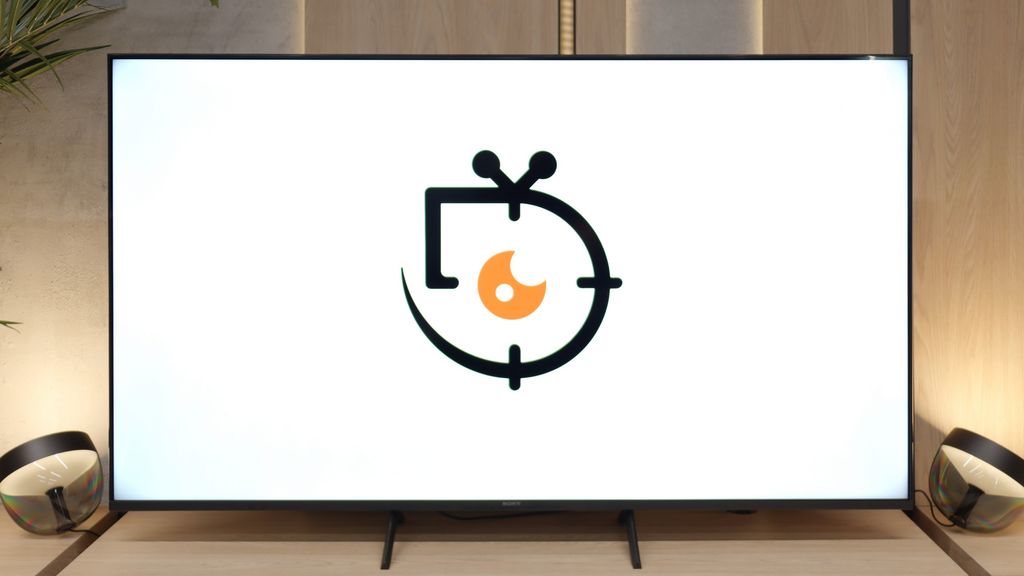
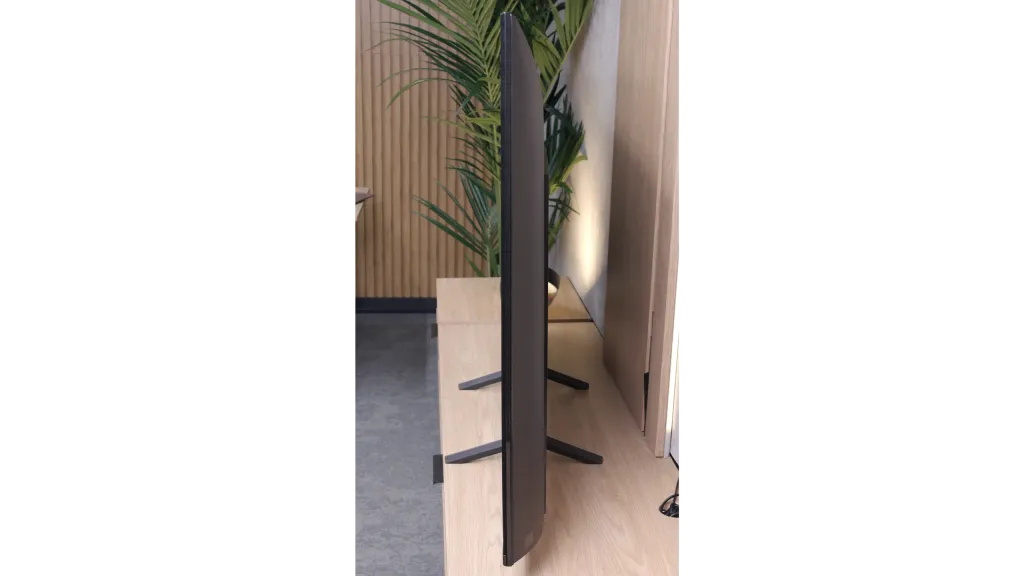
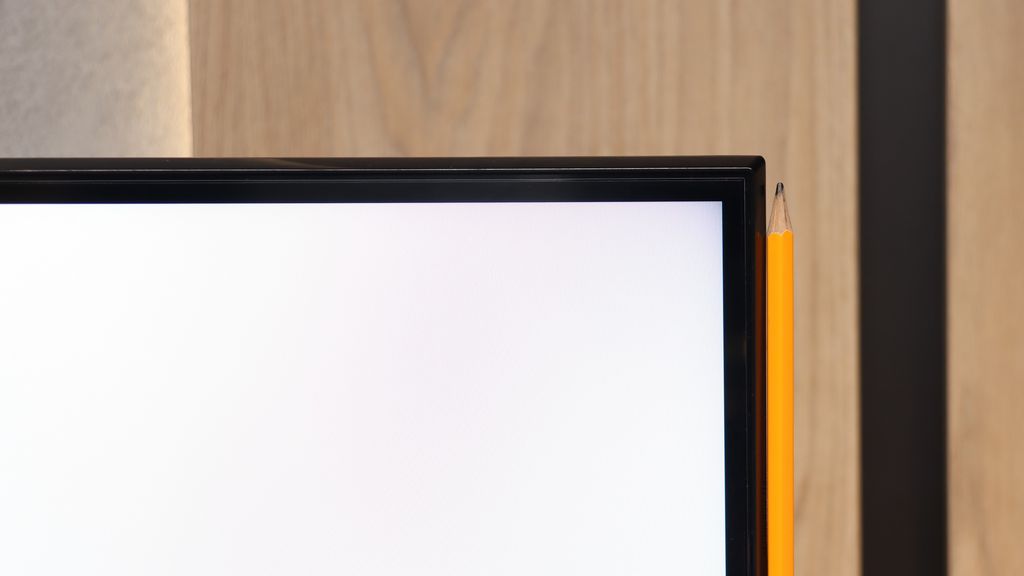
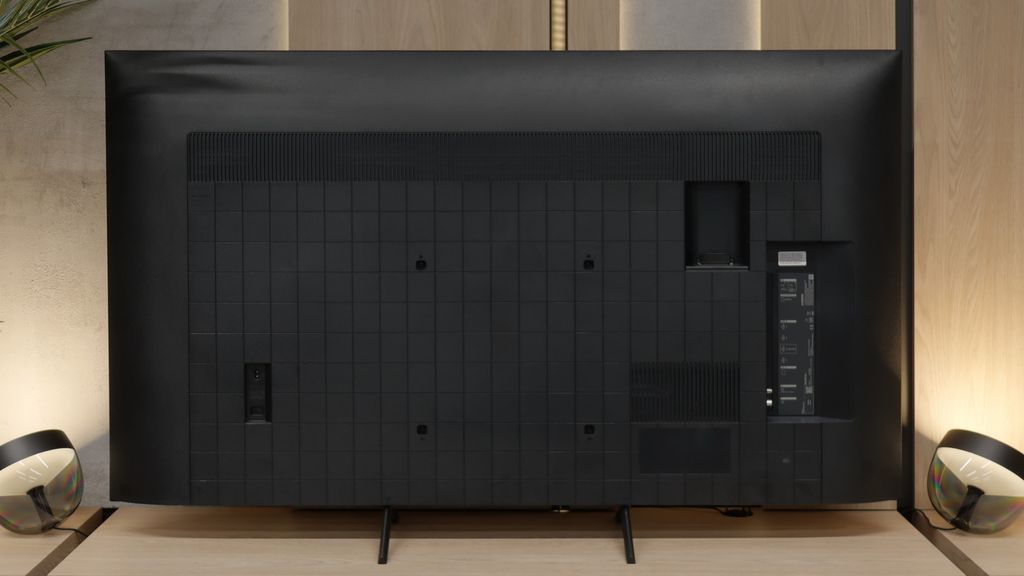
Contrast and black detail
6.7/10
2.2/10
Local dimming function: Yes, number of zones: 100 (10 x 10)
Local dimming function: No
Contrast:

Result
37,350:1

Result
8,850:1

Result
20,350:1

Result
4,300:1

Result
3,800:1

Result
1,150:1

Result
1,150:1

Result
1,050:1

Result
1,050:1

Result
900:1
Halo effect and black detail visibility:

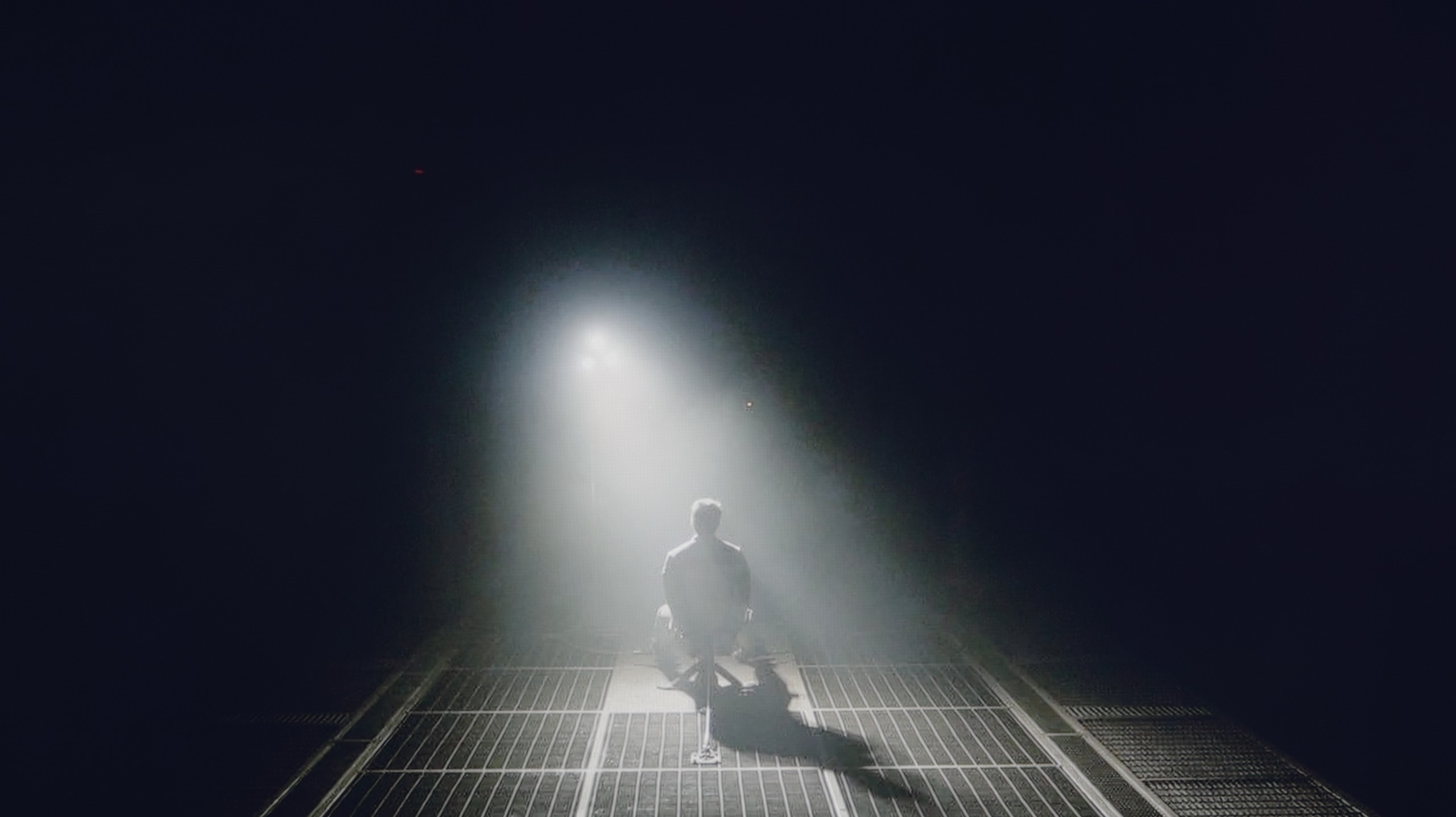
The Samsung Q80D television is equipped with a VA panel, which immediately affects the difference in contrast and black reproduction compared to IPS panels. VA panels offer significantly better contrast and deeper blacks, while IPS panels have better viewing angles but poorer contrast. For the 55" model, the television has 100 local dimming zones, and it should be noted that this number may vary depending on the screen size. Thanks to local dimming, blacks look good, but it's worth mentioning that the algorithm of this technology, combined with a limited number of zones, can sometimes go a bit "haywire." Bright objects can be dimmed to achieve better blacks. During testing in a scene from the film Oblivion, the lights merged into one blot, regardless of the dimming settings, showing the limitations of this technology. In the movie Sicario 2, large dimming zones were particularly noticeable, for example, with small helicopter lights, indicating how large the areas controlled by a single dimming zone are. Despite these imperfections, the local dimming technology still offers significantly better picture quality than televisions without this feature or with edge lighting. With the ability to completely turn off individual zones, the television can provide a noticeable boost in brightness in selected areas, which can give the image a cinematic effect, especially in dark rooms.
Bravia 3 in most variants, including the 65-inch model we tested, uses an IPS panel and unfortunately, this isn't the best news for those who value depth of image and truly velvety blacks. This technology has its advantages, offering decent viewing angles, but they come at the cost of very low contrast, which is particularly noticeable during evening viewing sessions when we expect the screen to go dark where it should. However, the list of problems doesn't end there. Our unit also showed noticeable imperfections in the blacks, which exacerbate the effect of their shallowness. For instance, in the scene with the helicopter, you can clearly see blooming in the corners of the screen and noticeable vignetting.
It's hard not to think that even a simple local dimming system could have salvaged the situation and added a bit of drama to the image, which is lacking here. Unfortunately, Sony has not opted for such a solution, and as a result, we have a repeat of last year's performance. So, Bravia 3 is not a television that will charm with cinematic depth of black. At night, instead of intense black, we are more likely to see grey pretending to be darkness, which may disappoint more discerning viewers.
HDR effect quality
5.8/10
4.6/10
Luminance measurements in HDR:

Result
927 nit

Result
423 nit

Result
612 nit

Result
242 nit

Result
856 nit

Result
316 nit

Result
327 nit

Result
369 nit

Result
236 nit

Result
379 nit
Scene from the movie “Pan” (about 2800 nits)

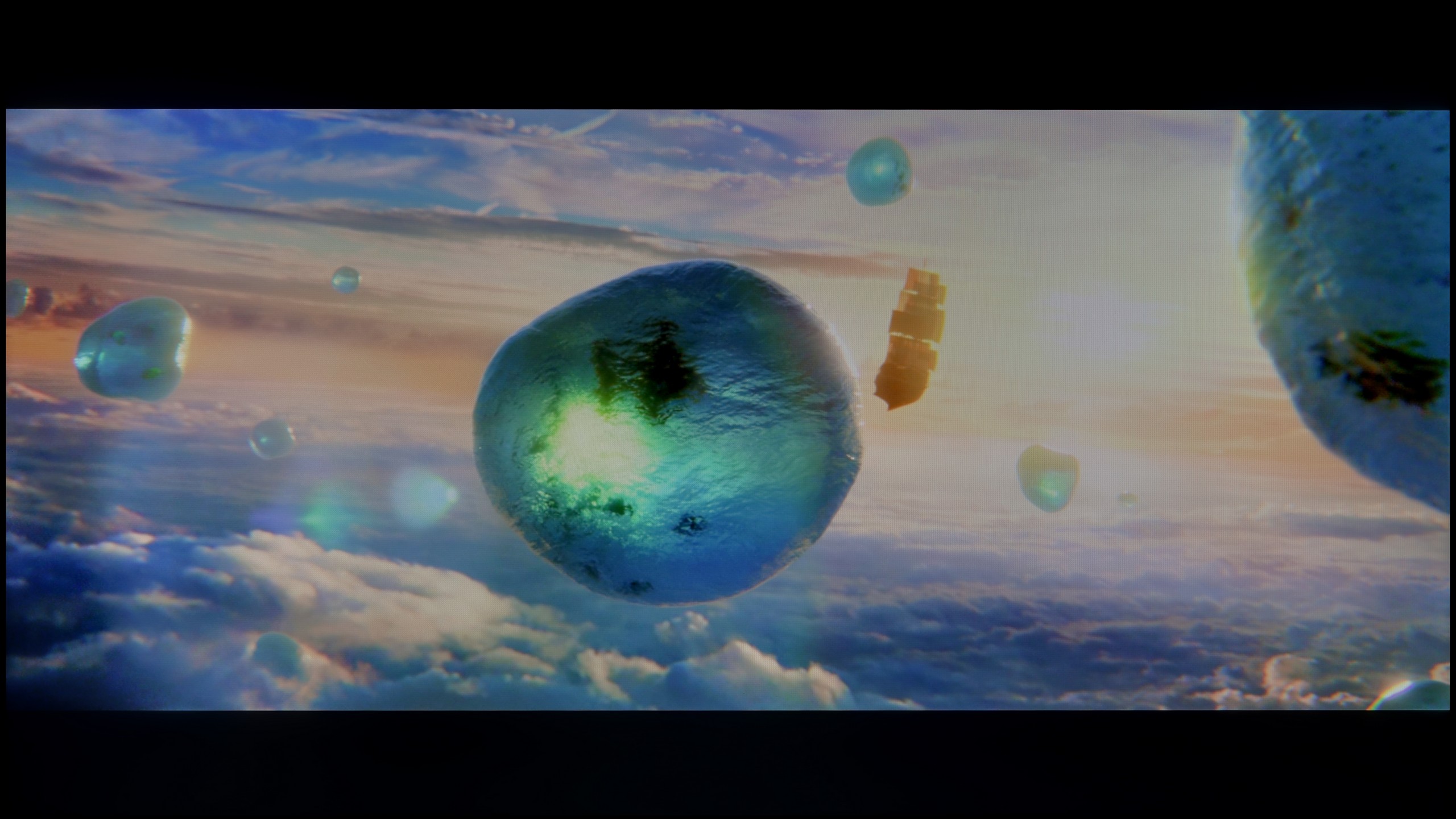
Scene from the movie “Billy Lynn” (about 1100 nits)

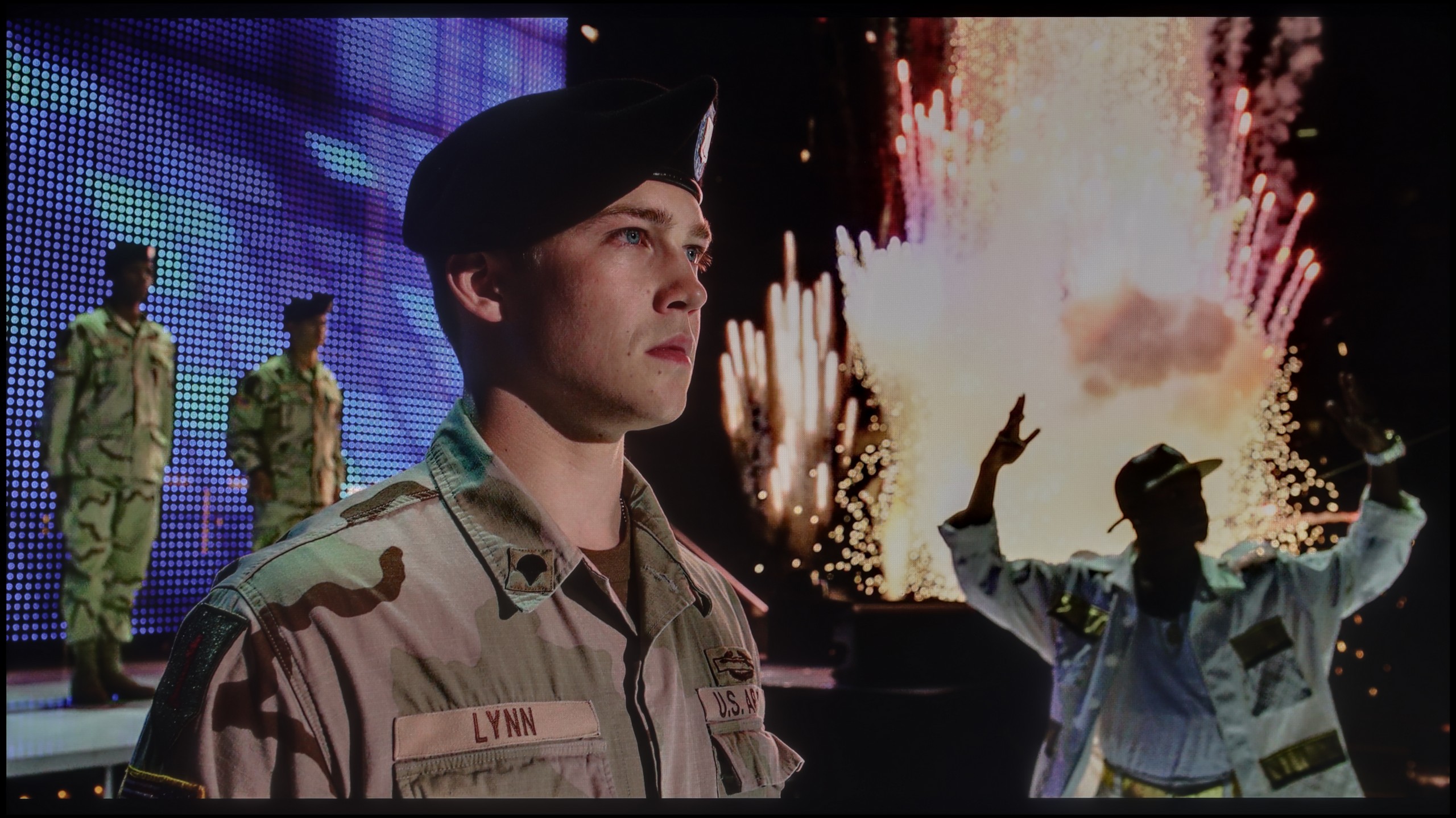
Static HDR10


Dynamic: HDR10+
Dynamic: Dolby Vision


HDR luminance chart:
SONY BRAVIA 3
HDR luminance
Samsung QLED Q80D
HDR luminance
In the context of HDR, the Samsung Q80D television, as expected, achieves very positive brightness results in the tested movie scenes, where the frame is filled with light, reaching values from 600 to 900 nits, allowing for a great juiciness of the image. Such results enable the user to feel the difference between HDR and SDR quality. Unfortunately, problems arise in situations where small light effects occur against a dark background. In such cases (e.g., the 4th test screen from the film Sicario 2), a noticeable drop in brightness is observed, which is caused by the large size of the dimming zones used here. This limitation, combined with the dimming algorithm, affects how the television handles small bright elements on a dark background. At that point, we may experience an undesired lack of brightness, and the HDR effect resembles that of SDR.
Bravia 3 does not hide the fact that it belongs to a group of TVs that are rather modest in terms of brightness. Our measurements showed around 370 nits, which is a value balancing on the brink where any HDR effect can still be discussed. For some, this is an acceptable level, while for others it is more typical for SDR materials, where spectacular flashes or vivid contrasts are not expected. The impression is that this is not a TV for those focused on the highest image quality in demanding film content. However, this does not mean that there are no advantages to be found here. Compared to its predecessor, the X75WL, the Bravia 3 has gained an additional PFS filter, which works similarly to solutions known from QLED technology. Thanks to this, the DCI-P3 color gamut has been significantly expanded, reaching over 91 percent, which in practice results in more saturated colours and a more pleasing texture of the image. As a result, even everyday content looks a bit more vibrant, and films and series can surprise with their colourful presentation, despite limitations in brightness itself.
Factory color reproduction
6.8/10
5.8/10


Factory Mode
After calibration


Factory Mode
After calibration
In "Filmmaker" mode, which is the best choice right out of the box, the Samsung Q80D television shows solid colour reproduction. For SDR content, a noticeable drop at the start of the gamma curve suggests that details in dark scenes may be less clear, affecting the overall viewing experience. Regarding white balance in SDR content, while generally correct, significant drops in blue at screen coverage above 70% can result in less natural shades in both bright and dark scenes. Users may notice that some blue elements in the image may appear less vibrant, and the overall colour will have a warmer hue.
In HDR content, the EOTF curve being above the reference line for most of the time indicates that the television may struggle to accurately reproduce brightness and details in the brighter parts of the image, which can be detrimental for the viewer. It is also worth noting the significant drop at the start of this chart, indicating that the television has difficulty reproducing brightness in the darker parts of the image, as seen in the contrast and black test, where several scenes were unable to show the full capabilities of the television’s brightness. In terms of its white balance, the initially good performance on the graph is promising, but the steep decline in red, coupled with a significant increase in blue, can lead to inaccuracies in reproducing some skin tones and other key colours. This phenomenon may be noticeable to viewers in scenes where colour details are crucial.
We primarily tested the Sony Bravia 3 in movie mode, which immediately turned out to be the best choice among the factory settings. It's not a perfect picture, but compared to the eco mode that the TV suggests straight out of the box, the difference is evident and definitely better. In movie mode, there is a noticeable issue: the picture seems too warm, which is due to the lack of blue colour in the white balance. Nevertheless, in SDR content, the final effect can still be considered quite decent and satisfactory for everyday viewing. Much more serious errors arise in HDR materials. The Color Checker analysis showed significant deviations, and poor brightness management, combined with limited colour gamut coverage, further exposes the shortcomings of the picture in this mode. All of this makes HDR on the Bravia 3 look unconvincing and can ruin the impression left by the otherwise quite decent SDR content settings. Fortunately, it’s not a hopeless situation. Various errors can be somewhat mitigated, and some can even be completely corrected through professional calibration. That's why we decided to check how the TV would perform after such adjustments.
Color reproduction after calibration
8.1/10
7.5/10

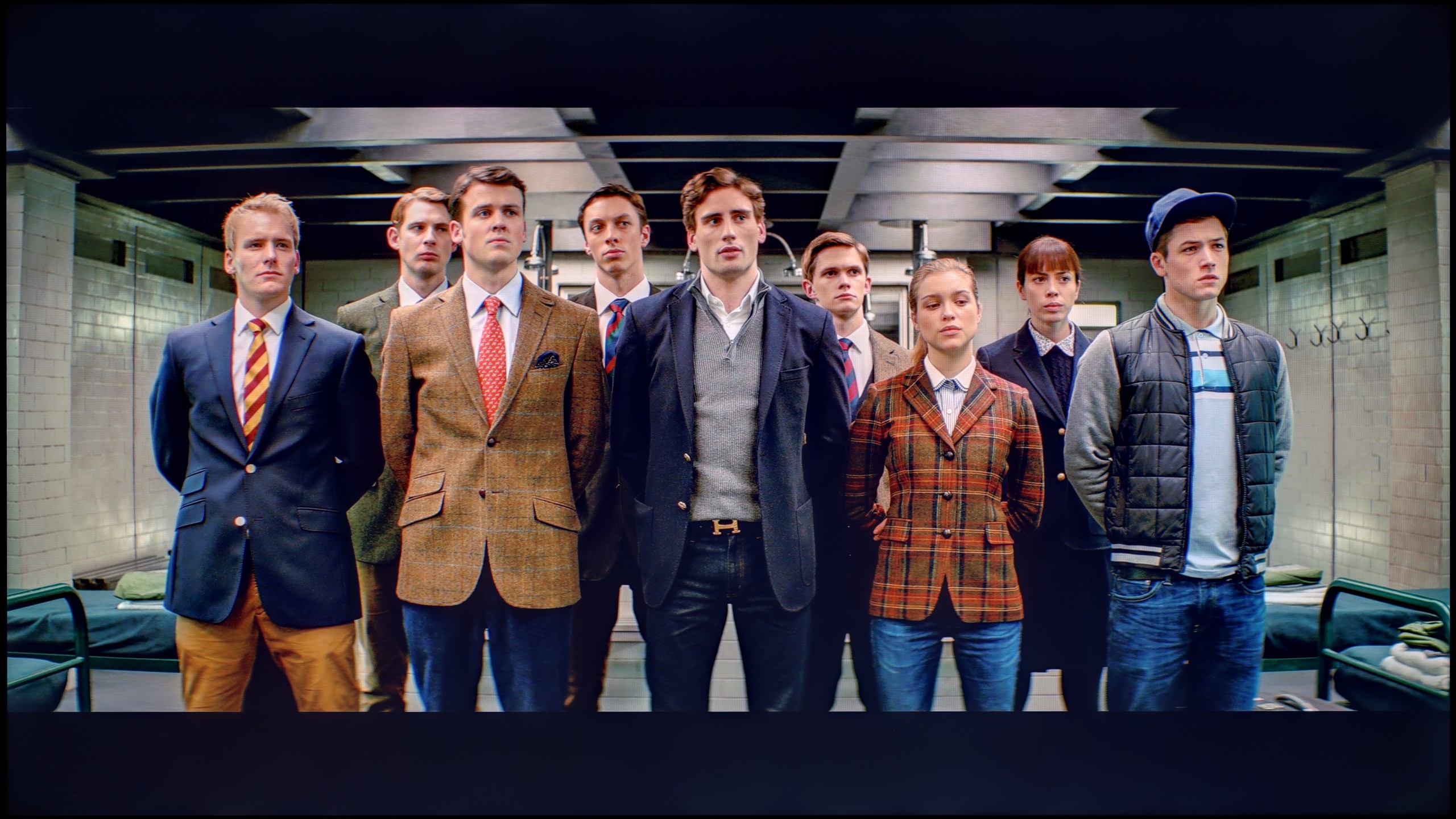

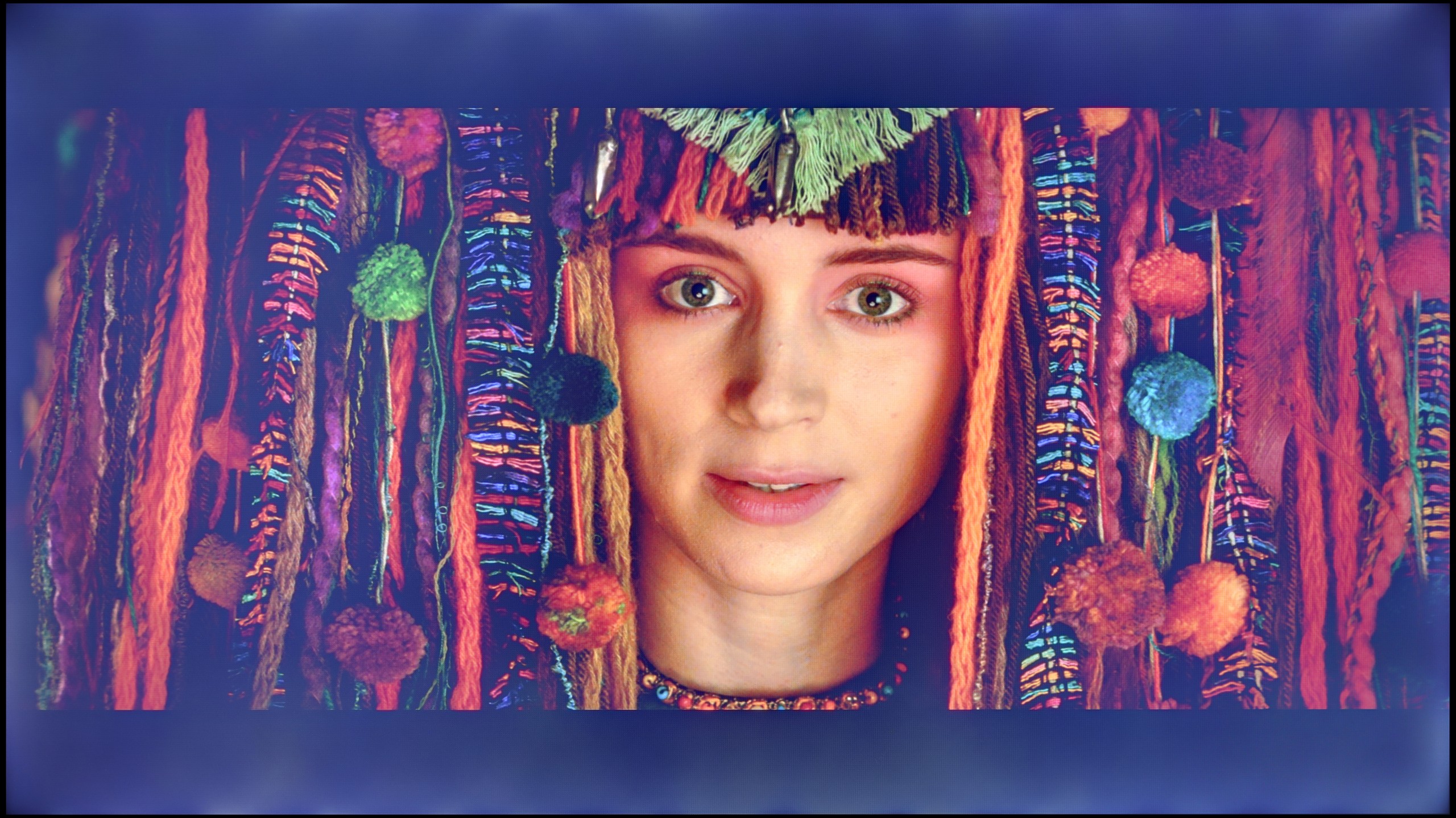
The movie mode after calibration looks significantly better than the one you see right out of the box. Samsung offers an advanced range of calibration tools in its televisions. Among them are 2- and 20-point greyscale adjustment and CMS (Color Management System). Both in HDR and SDR mode, white balance has improved significantly, although there are slight errors at the end of the graph for HDR content. Contrast has also been greatly improved, and the gamma curve responsible for SDR shows better results. However, when it comes to HDR, the EOTF curve on the television appears to be at an ideal level at first glance. However, when we dig a bit deeper and enable the EOTF graph while watching films, we may notice that all the lines of the curve are above the reference line. You could even say that the television is "cheating" when playing film material. Such a situation, where the EOTF curve is above the reference line, causes the screen – although it may appear brighter, which some users might find appealing – to lose detail in the darker parts of the image. In practice, this means that in scenes with a lot of shadows or dark elements, the television is unable to accurately render the details that should be visible.
Calibration allowed us to extract significantly more from ChooseTV 3 than we could have expected at the beginning. First and foremost, it managed to address the deficiency of blue, which previously caused a noticeable warming of the image. After a slight adjustment in white balance, most errors in the Color Checker measurements for SDR content practically disappeared. The whites took on a natural tone, and brightness management in gamma stabilised to an almost ideal level, not exceeding the threshold of what the human eye can perceive. So it is safe to say that in SDR content, after a few adjustments in the settings, ChooseTV 3 performs really well. It fares much worse, although still definitely better than before calibration, when it comes to HDR content. The white balance has been brought in line, but the limitations of the IPS panel are insurmountable. The lack of local dimming means that even the smallest elements can be overexposed, which is immediately noticeable. Colour-wise, the effect has also improved, although it is far from perfect – many errors still exceed the threshold of four, and even five delta E units, remaining visible to the human eye. It was already clear earlier that ChooseTV 3 is not a television designed to impress with HDR quality. Nevertheless, it is pleasing that in SDR content, after calibration, the picture can look really great and in this category, the television pleasantly surprised us.
Smoothness of tonal transitions
8.8/10
8/10

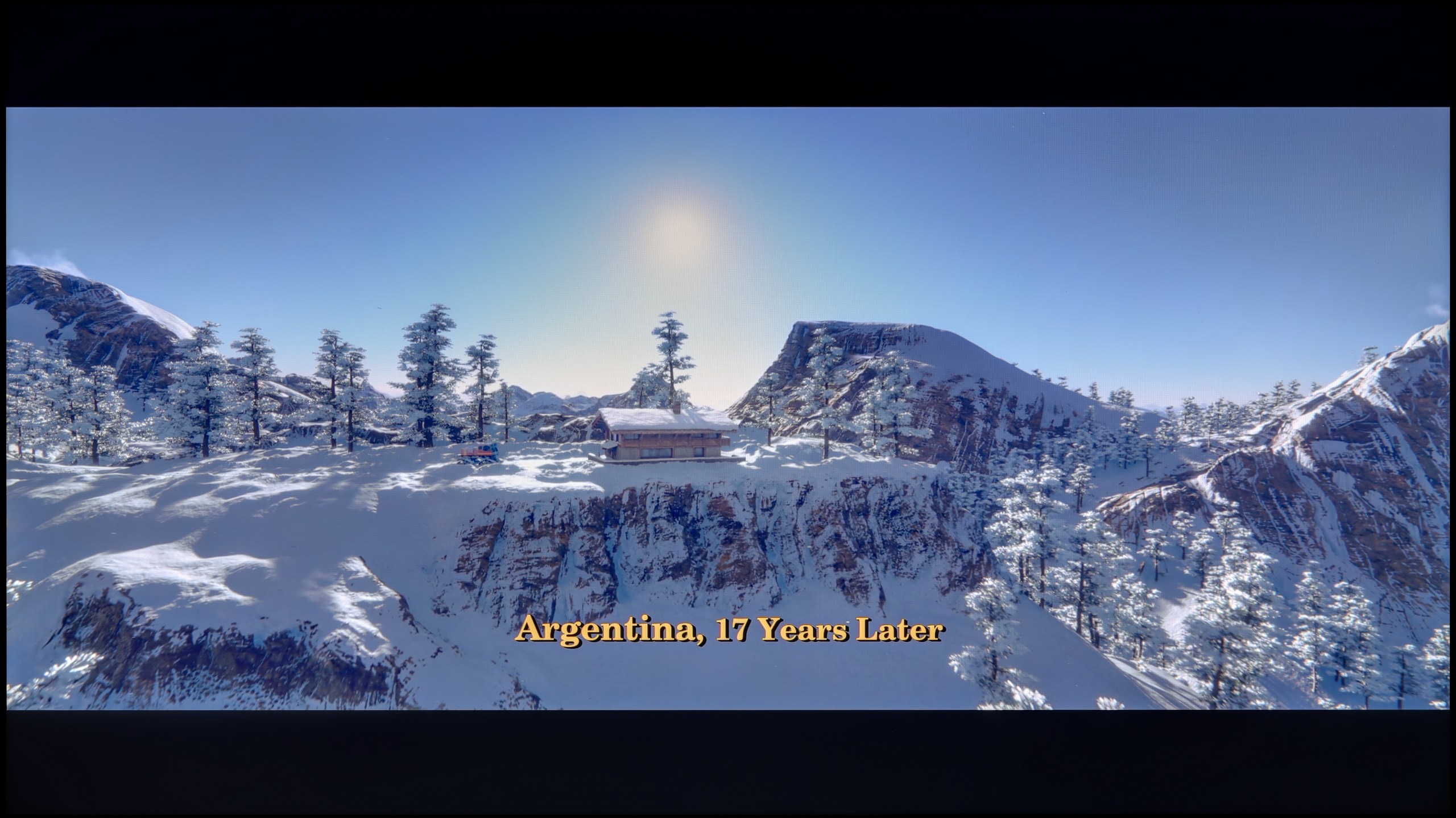

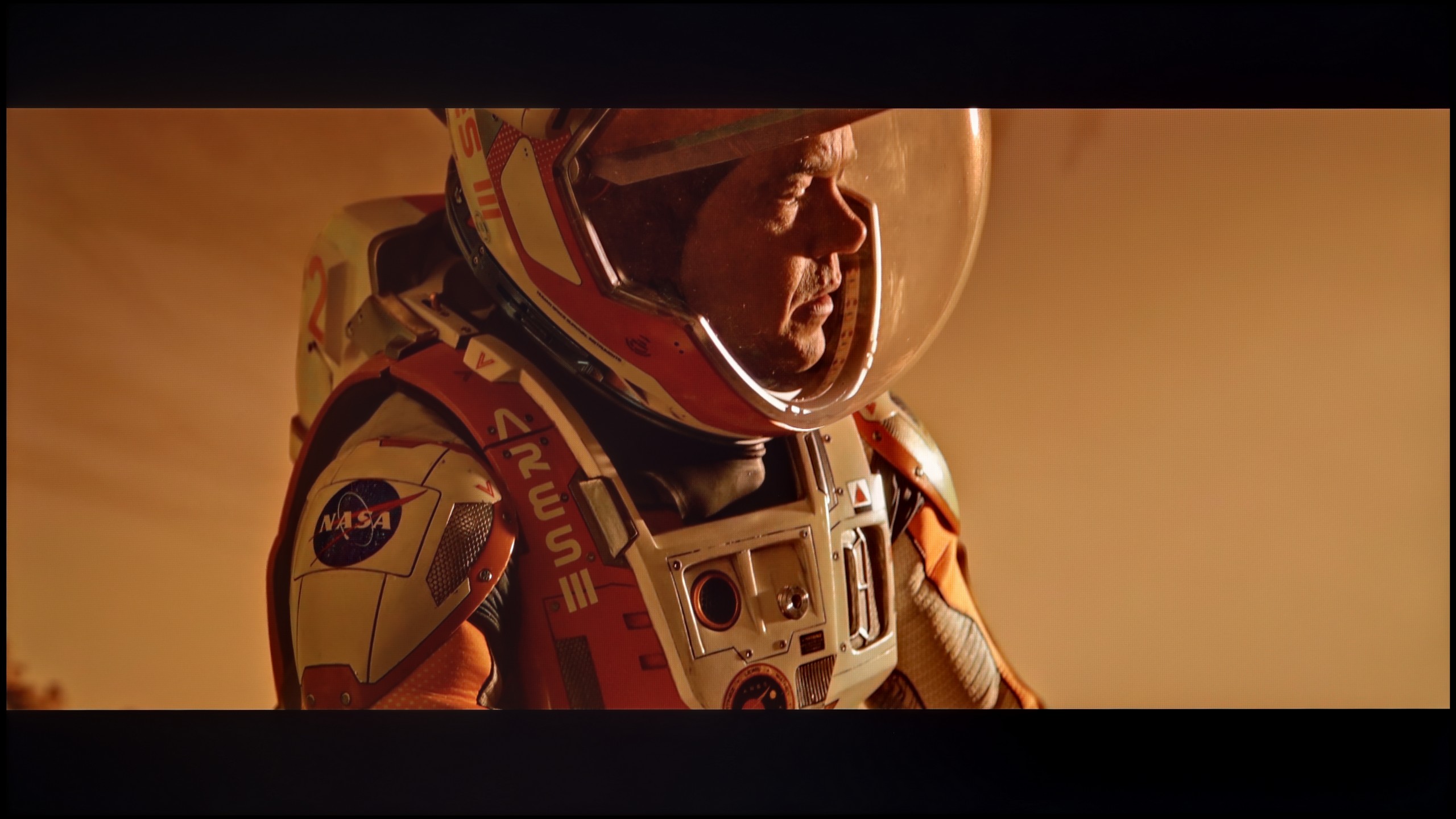

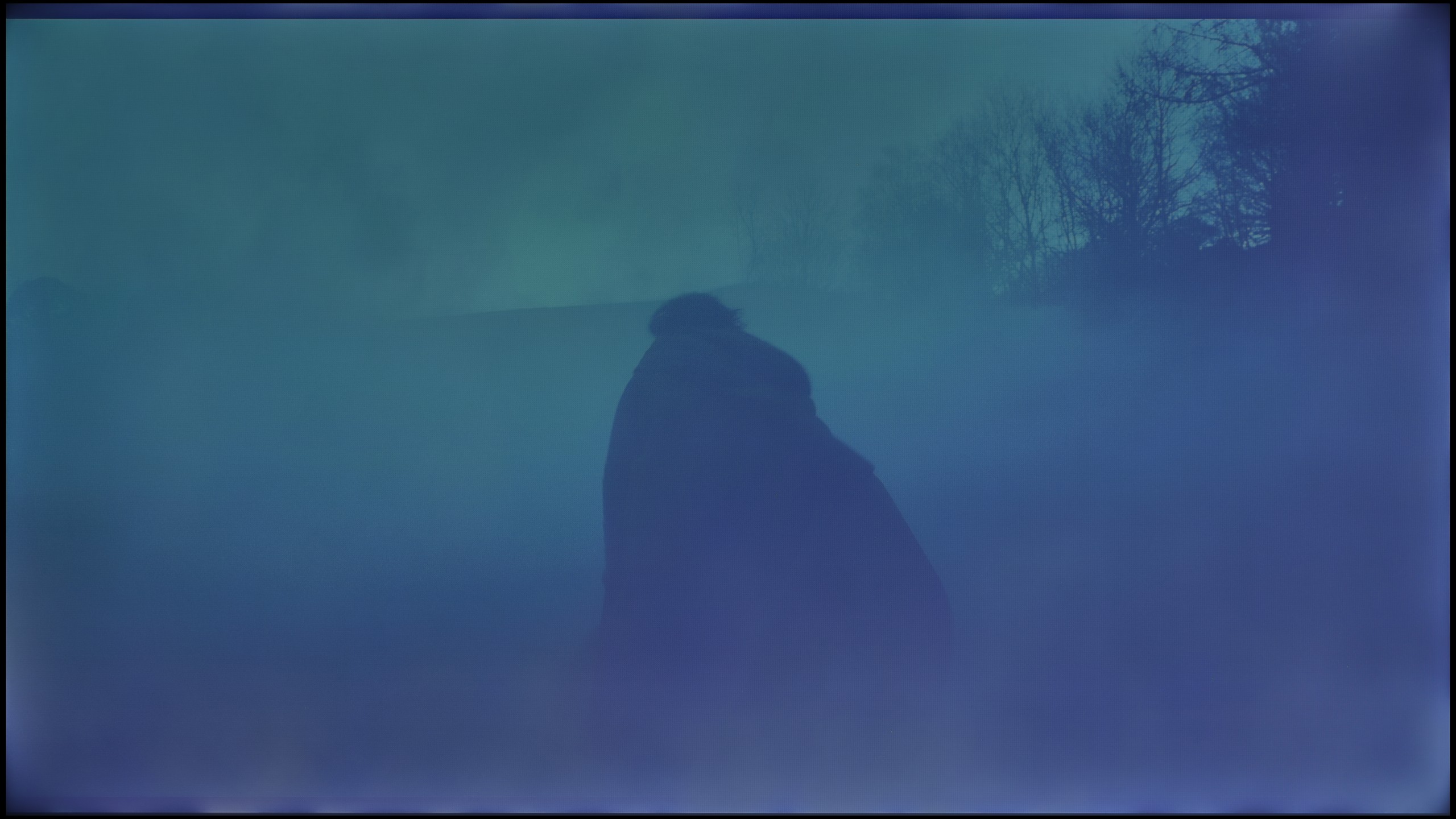

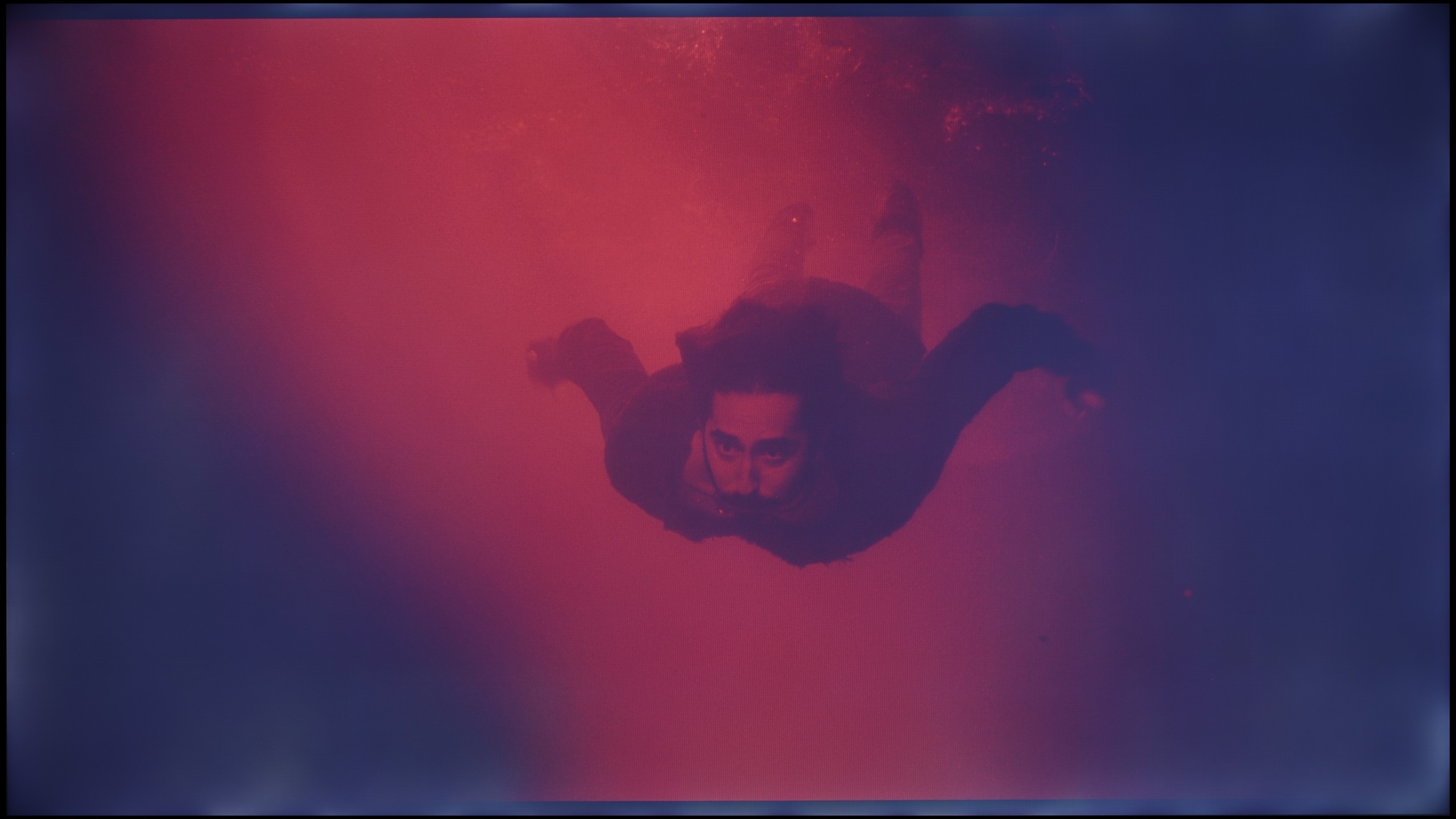




The tonal gradation on the Samsung Q80D television is excellent and can be considered one of its strong points. Even in the most demanding scenes from the films we tested, it performs superbly. Any potential issues with smoothing transitions in colours are minimal and subtle. The average viewer is unlikely to notice them, which translates to an overall positive visual experience in everyday use.
In terms of the fluidity of tonal transitions, Bravia 3 performs really well. In brighter scenes, we didn't notice any serious errors – the screen handles colour blending almost perfectly and doesn’t create artificial contours that can spoil the viewing experience. Similarly, in darker segments, there are no major issues with colour gradation, although another problem arises here. Strong brightening and uneven backlighting of the panel in dark scenes make it difficult to definitively assess the gradation itself, because the effect is spoiled by the unevenness of the image. However, if we focus solely on colour blending, the result should be regarded as very good.
Image scaling and smoothness of tonal transitions
7/10
7/10
Smooth transition function

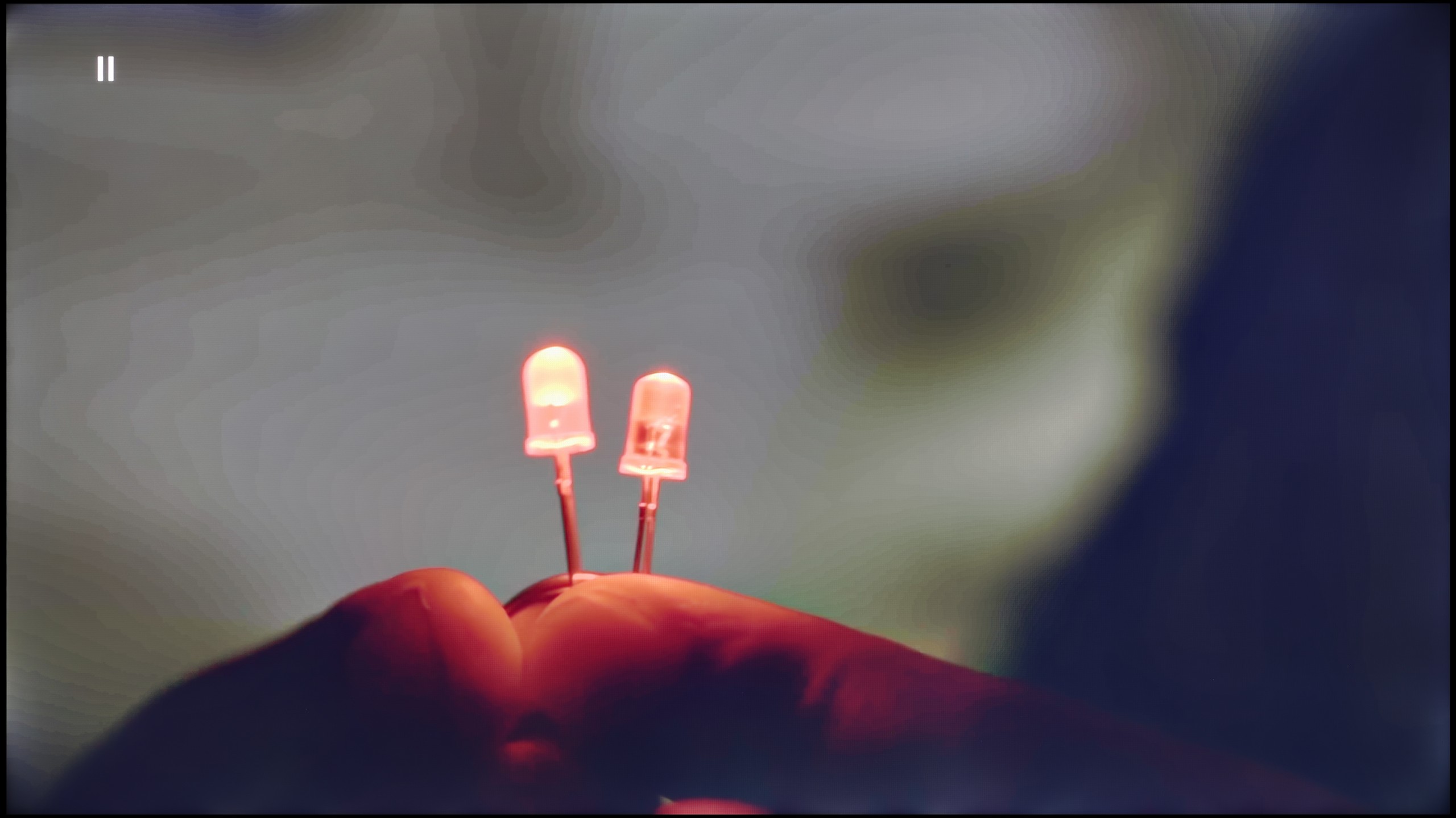
Image without overscan on the SD signal


Samsung Q80D performs very well with low-quality materials. The noise reduction works on the principle of gentle gradation, making it very effective in smoothing out unwanted image disturbances. Unfortunately, this same effectiveness also causes it to blur elements that shouldn't be smoothed, such as film grain. For those who prioritise a plastic, smooth image, this can be seen as a significant advantage, especially with lower-quality content.
In terms of image scaling, Samsung Q80D stands out positively in this aspect, significantly enhancing the viewing comfort. The TV handles the conversion of lower-resolution materials, improving their quality and details. For example, in the attached image featuring a model, there are no visible artefacts or excessive fraying of branches, which demonstrates advanced image processing technology.
Bravia 3 brings something more to the Sony television family than just a shared name. It stands out primarily for its ability to enhance the quality of weaker materials thanks to the processor used. Of course, we won’t find the advanced XR chip known from more expensive models here, but nonetheless, it must be said that the image in lower resolution looked surprisingly good. The scaling worked effectively, and most areas of the screen were free from the typical excessive edge roughness found in budget constructions.
Also worthy of attention is the function that improves the smoothness of tonal transitions. In high setting, it works really well, effectively masking gradation imperfections without significant loss of detail. It does happen that the algorithm overzealously smooths elements that should remain sharp – for example, faces – however, in the overall assessment, the effect is beneficial. The best results were achieved precisely at the highest setting, and this is the option we could recommend to those watching lower-quality content.
Blur and motion smoothness
7.3/10
5/10

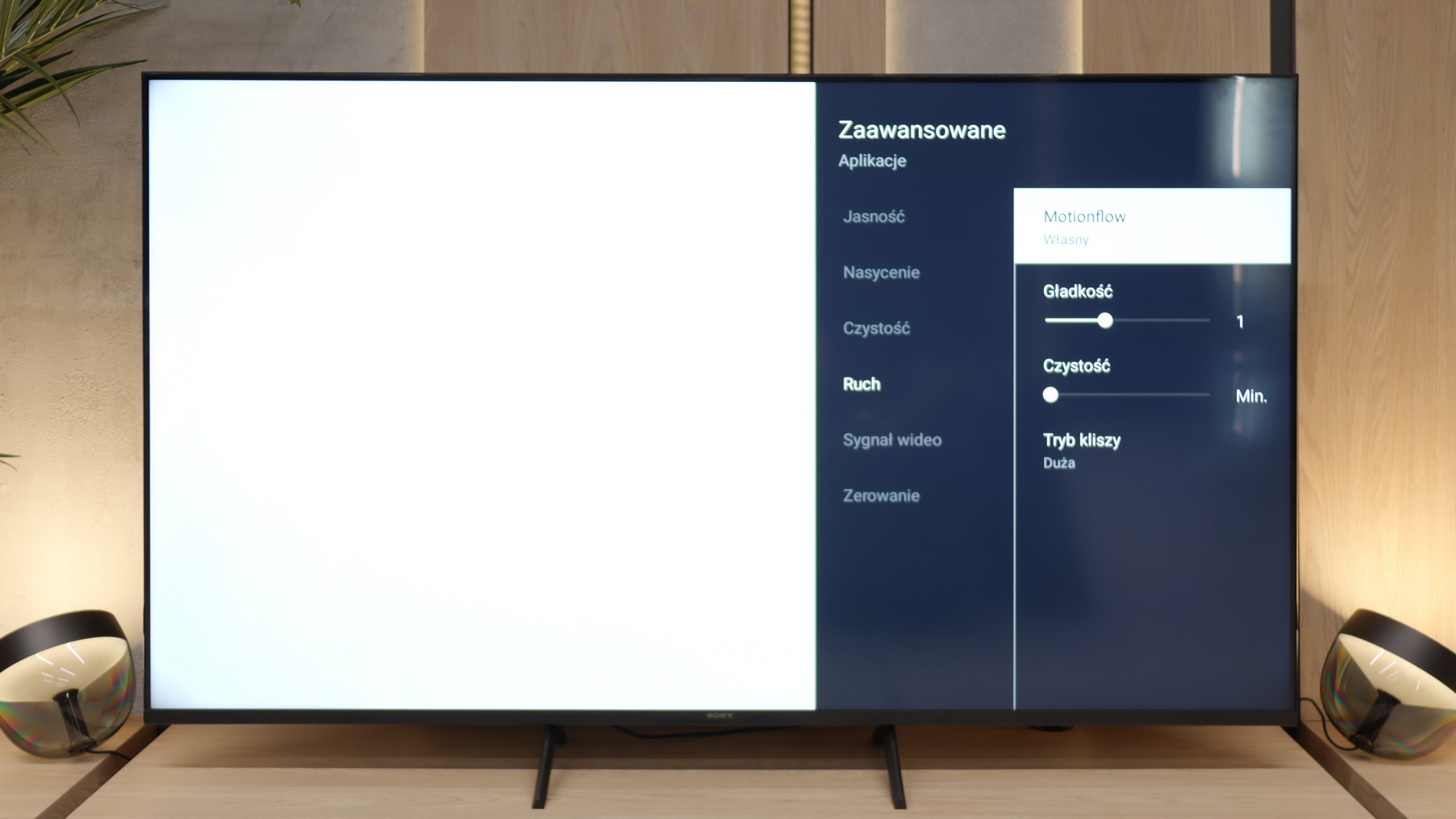
Blur (native resolution, maximum refresh rate):



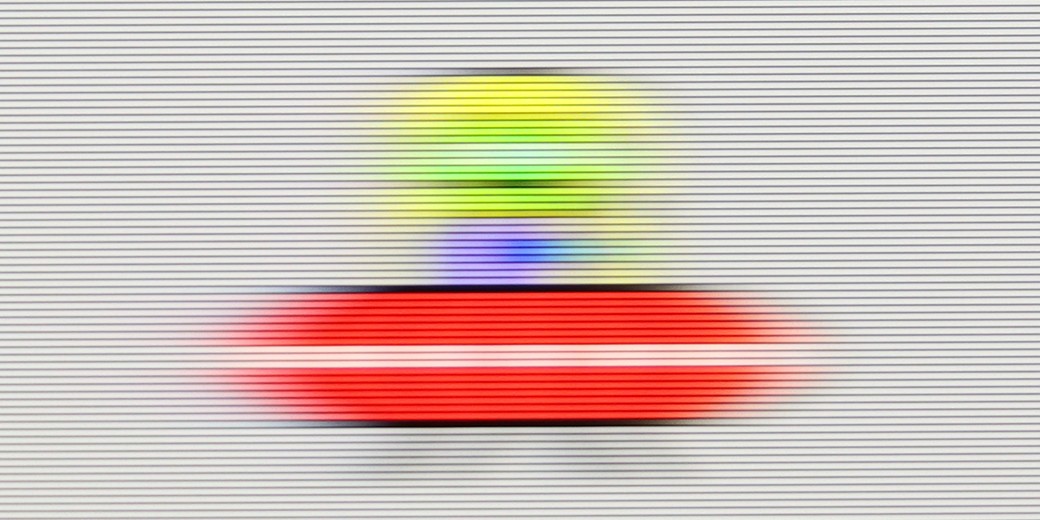
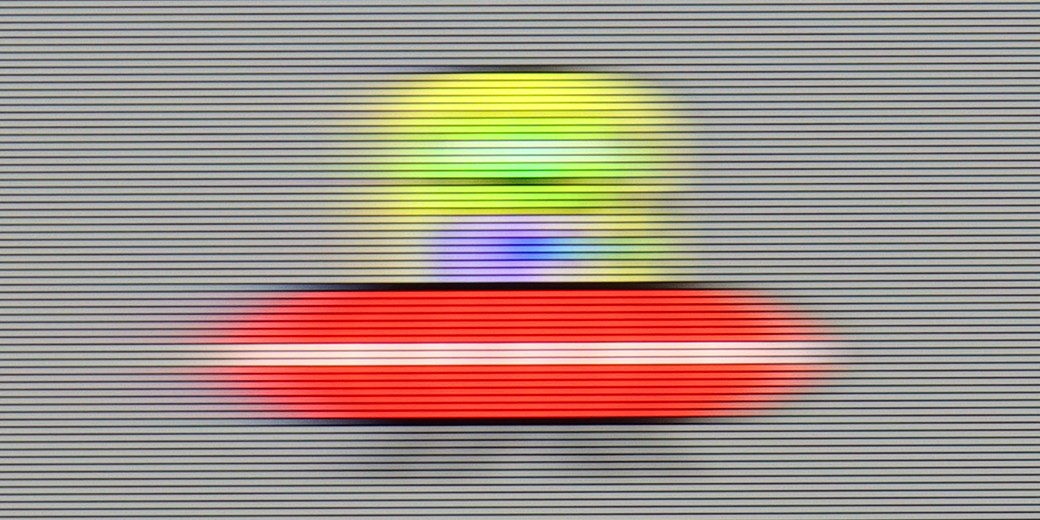
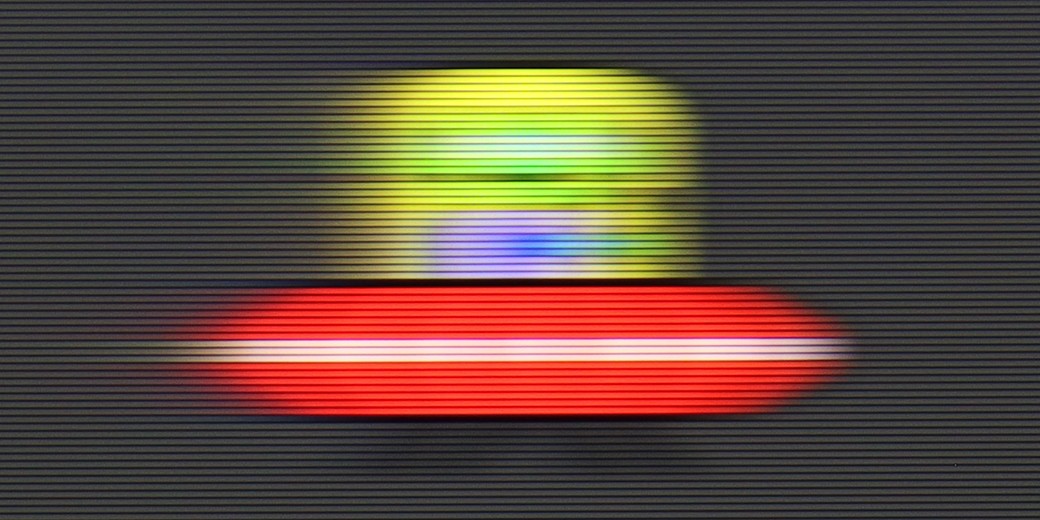
Blur (BFI function enabled):
Image flickers in this mode



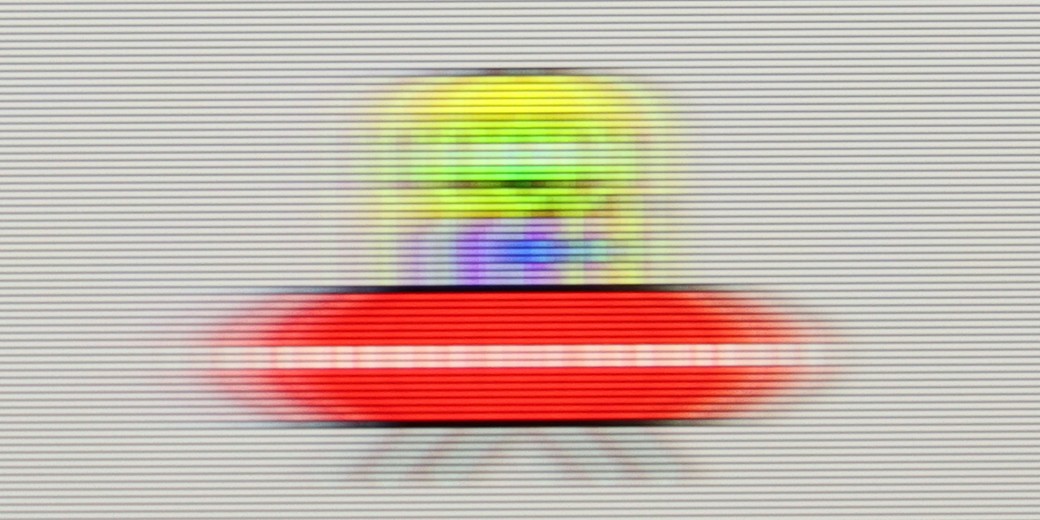
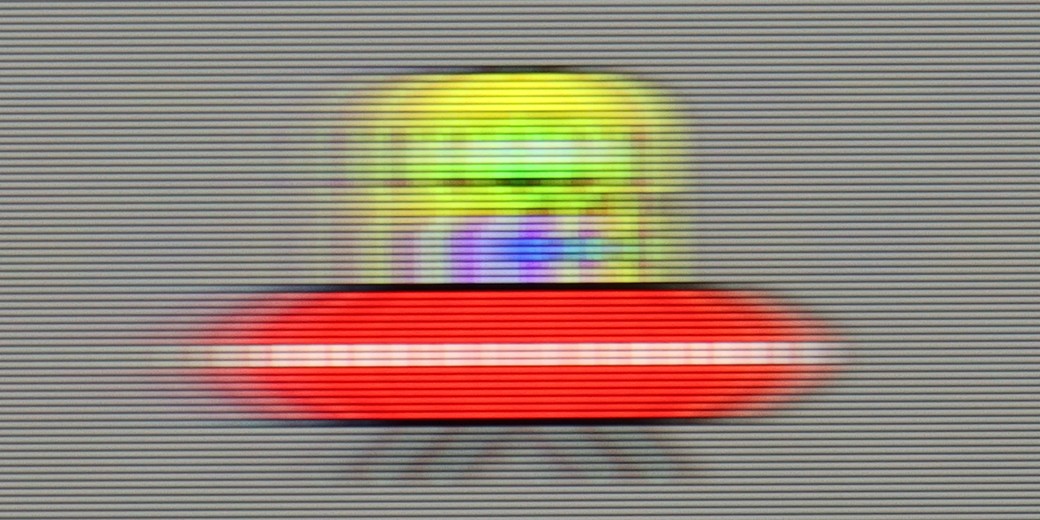
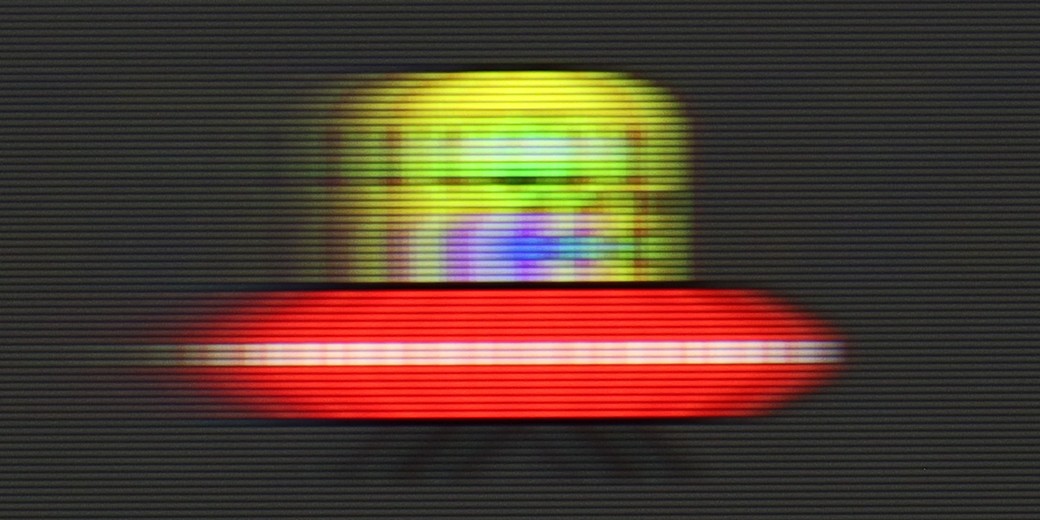
The Samsung Q80D television stands out very positively in terms of motion fluidity and minimizing blur, mainly due to the 120Hz panel and above-average panel response time. Users have two options for adjusting fluidity: "Motion Smoothing," which allows for adjustments in a 10-step scale, and "Blur Reduction," particularly effective at higher refresh rates, improving the sharpness of fast-moving objects. In the UFO test, there is no blurring behind the moving object, and the image is not cloned forward, indicating the absence of an overshoot effect.
Motion smoothness has never been a strong point of televisions equipped with 60 Hz panels, and the Bravia 3 is no exception. Nevertheless, Sony has included something that may appeal to those more sensitive to the way images are displayed. I'm talking about the proprietary motion smoother, Motion Flow, which gives the user plenty of adjustment options. With it, one can make the image smoother, almost theatrical, or stick to a more cinematic style with characteristic judder that many people simply associate with a filmic atmosphere. These functions work with content at lower frame rates, such as films and series recorded at 24 or 30 frames per second, which is the material we deal with on a daily basis. This is precisely where the motion smoother proves to be one of the most important features in everyday TV usage, and here, the Bravia 3 performs really decently.
Console compatibility and gaming features
9.5/10
4/10
- ALLM
- VRR
- VRR range48 - 120Hz
- Dolby Vision Game Mode
- Correct implementation of HGIG
- 1080p@120Hz
- 1440p@120Hz
- 4K@120Hz
- Game bar

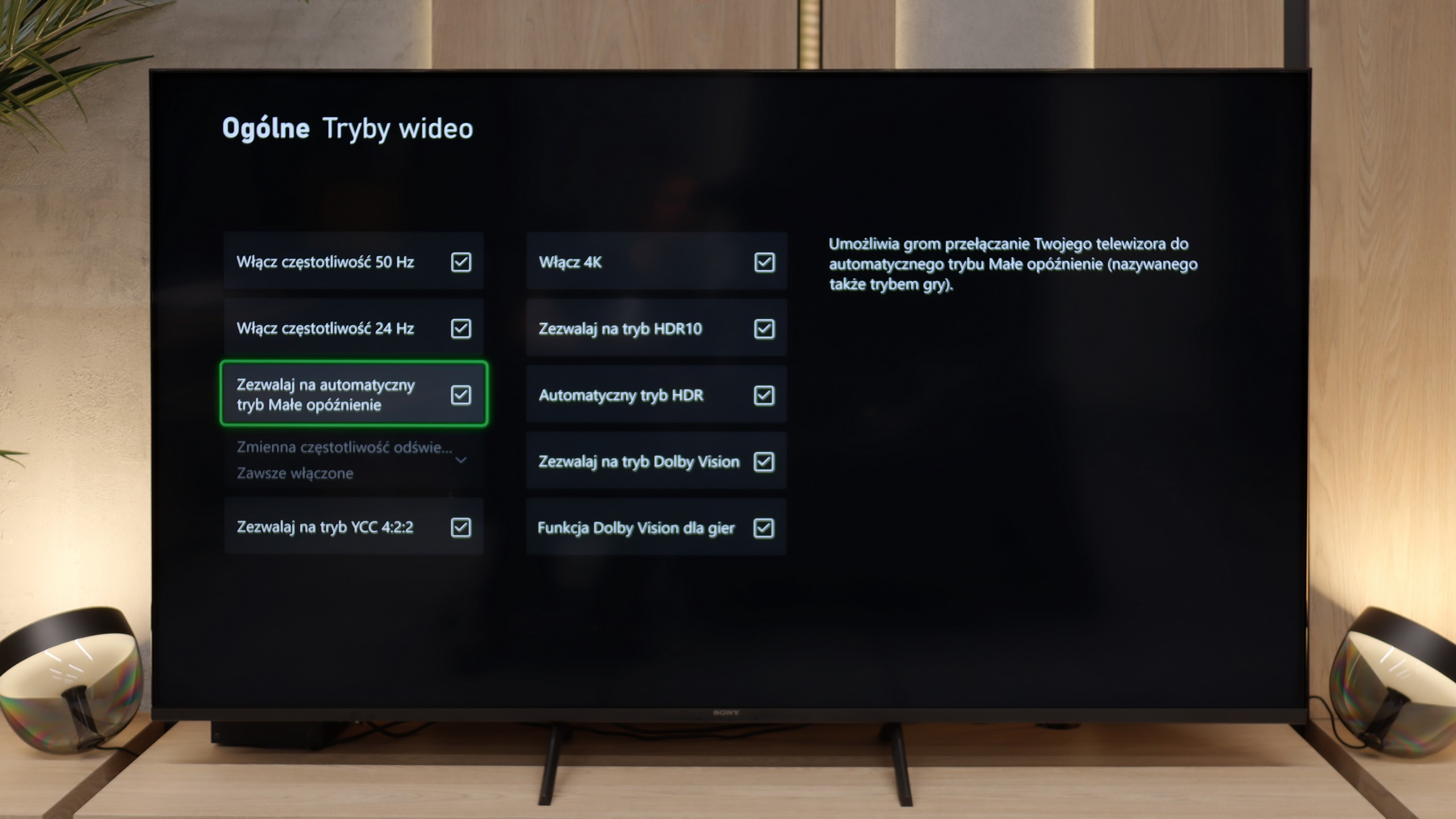

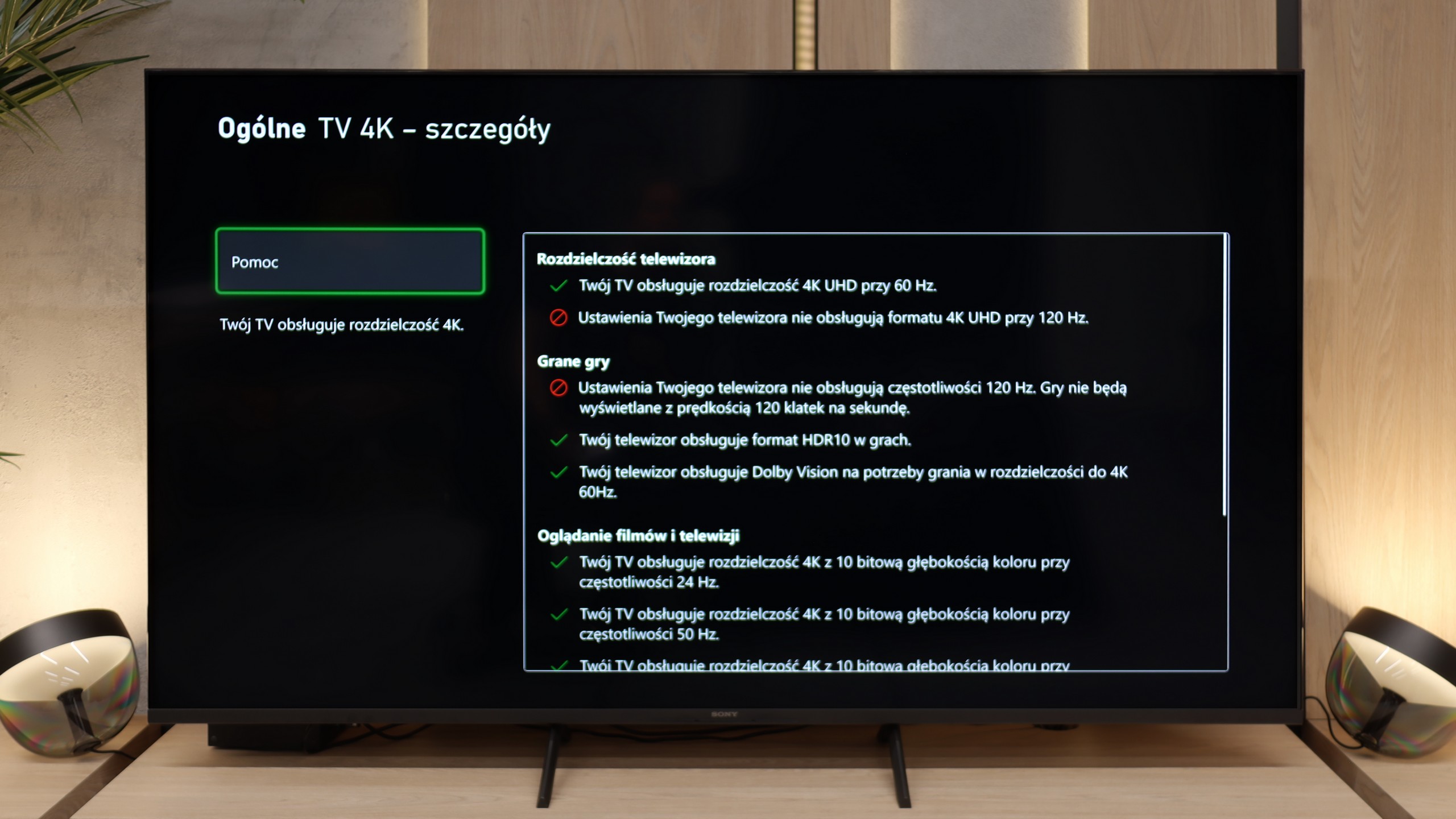

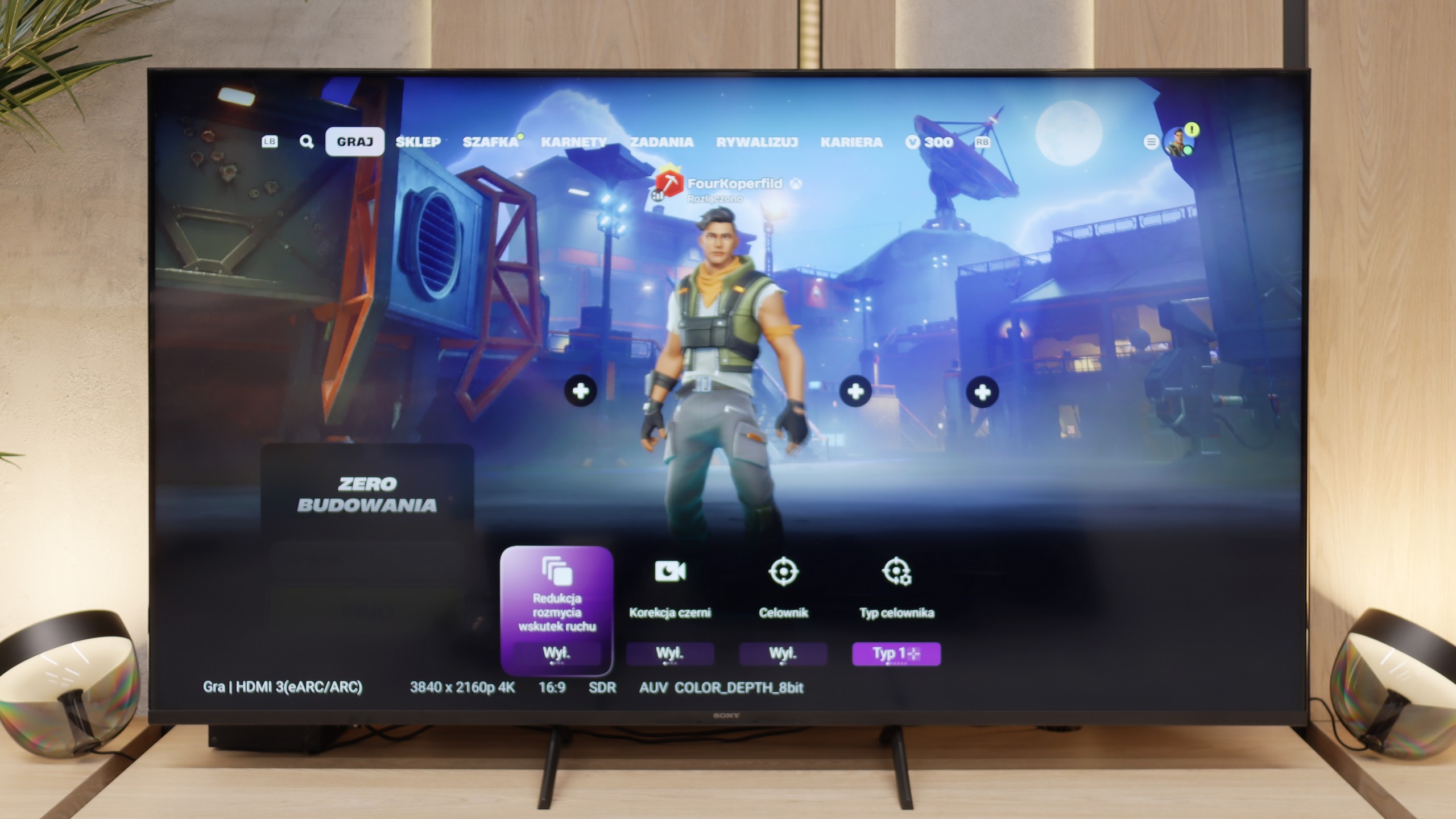

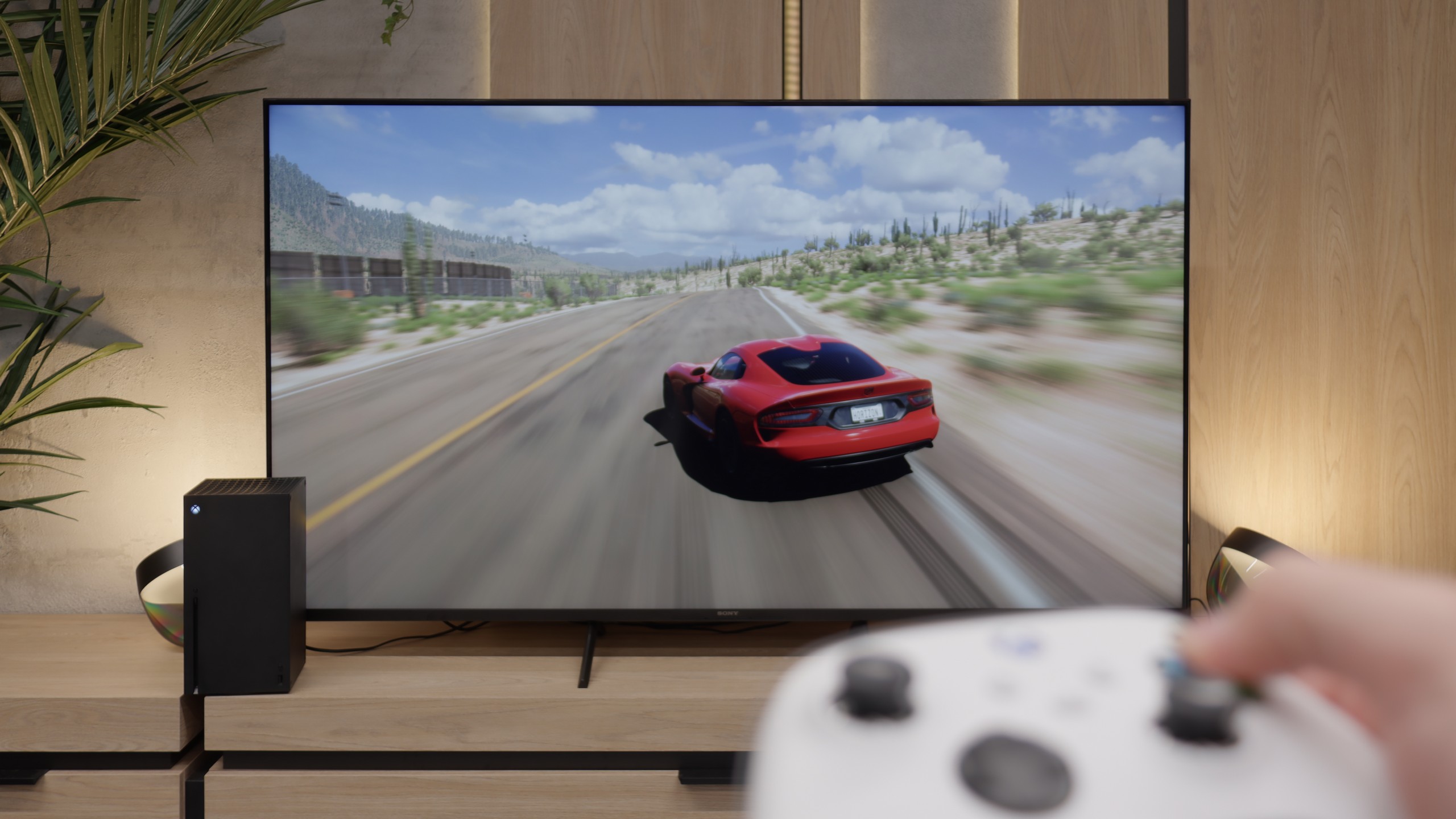
The Samsung Q80D TV is a real gem for gamers. It is equipped with four HDMI 2.1 ports, which is a rarity, especially in this price range. This allows users to enjoy features such as ALLM (Auto Low Latency Mode), VRR (Variable Refresh Rate), and 120Hz at 4K resolution. These features ensure smoothness and responsiveness of the image, which is a key aspect during dynamic gameplay. The TV also supports HGIG (HDR Gaming Interest Group), enabling optimal HDR content display in games. Additionally, it comes with a Game Bar, providing quick access to gaming settings. Users with Nvidia graphics cards will also be pleased with the implementation of G-Sync. This feature eliminates stuttering and screen tearing. The only downside is the lack of support for Dolby Vision, which may be disappointing for users looking for that HDR format. It's also worth mentioning that since 2022, thanks to the collaboration with Microsoft, Samsung TVs offer the Xbox Game Pass app, allowing for cloud gaming. This is an added bonus for gamers who want to take advantage of a wide library of games without needing a console.
Bravia 3 is not gear for e-sports enthusiasts or fans of late-night marathons with a controller in hand. The lack of 120 Hz refresh rate and HDMI 2.1 ports shuts down the conversation before it even gets started. This is a TV for casual gamers who, after work, will fire up FIFA or racing games, not for someone who measures every frame in a spreadsheet. Nonetheless, Sony has thrown in a few nice additions so it’s not completely sparse. ALLM works as it should, automatically switching the TV to game mode (low latency). We even find a simple Game Bar here, which is clear and intuitive. However, the biggest curiosity here is the PlayStation Portal app. Thanks to this, you can launch PS5 games wirelessly and see them right on the TV screen. It sounds great, but it only takes a few minutes to feel significant lag. In our opinion, it's more of a showcase of capabilities than something that can be used day-to-day. If someone really wants to game, it's better to plug the console in with an HDMI cable and forget about wireless issues.
Input lag
9.8/10
10/10
SDR
HDR
Dolby Vision
What more can I say, the input lag at this level is simply outstanding. It's hard to achieve a better result that will satisfy gamers! The television performed excellently at every tested resolution and refresh rate, both in SDR and HDR.
Here, the Bravia 3 shows its best side. Latency drops below 12 milliseconds in almost every resolution and mode, so the response to controller movements is instantaneous and there’s no sense of delay. It feels like the console and the television are speaking the same language, without unnecessary pauses and hesitations. The Dolby Vision Gaming mode deserves special attention. In its predecessor, the X75WL model, using this feature was simply a nightmare – input lag could reach over 100 milliseconds, which effectively ruined the enjoyment of gaming. In the Bravia 3, this issue has been completely eliminated.
Compatibility with PC
7.6/10
6/10

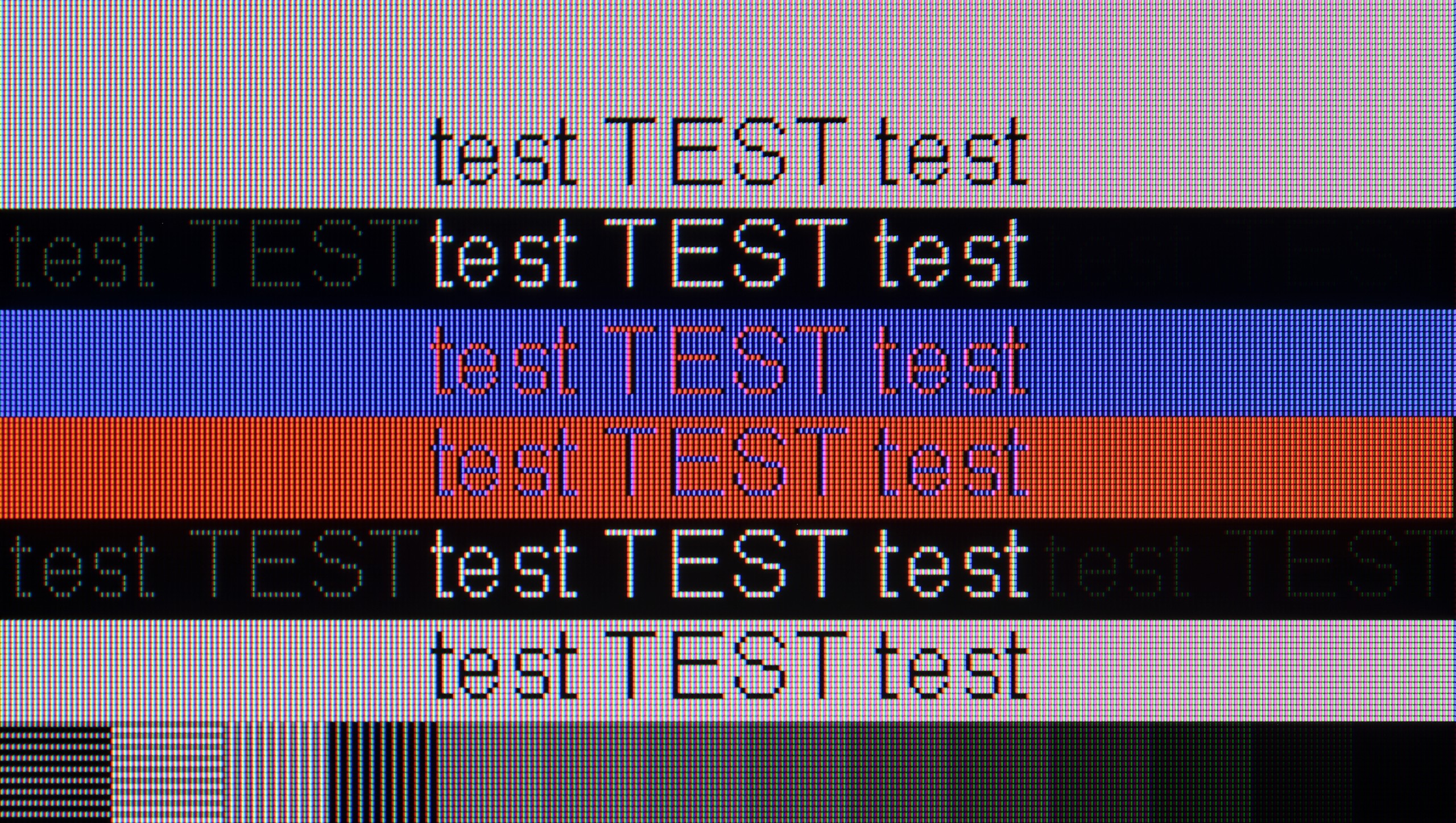
Samsung Q80D performs well as a computer monitor. With support for chroma 4:4:4 (only works in "Game" mode), text on the screen is sharp and readable, which is very important for those who want to work on such a TV with text documents or spreadsheets. One of the biggest advantages of this model is its exceptionally low input lag in “PC” mode, which is only 9 ms. This is a reference-level result that ensures smoothness and responsiveness, which is crucial for both gamers and video editing professionals. The only thing we can nitpick is that there is a certain issue with font rendering on dark backgrounds. When we zoom in on the tested font image, we notice that the horizontal lines are darker compared to the vertical ones. This means that the sub-pixels in the TV do not fully illuminate in this case. This could be due to an oversight by the manufacturer regarding the optimisation of the algorithm responsible for displaying thin lines, which affects the quality of details in text rendering on dark backgrounds. Nevertheless, Samsung Q80D is a very good choice as a PC monitor.
The IPS panel combined with properly functioning 4:4:4 chroma support means that the readability of fonts is at an excellent level. Letters appear sharp regardless of the background colour or content, so working with documents or browsing websites doesn't strain the eyes. In this role, the TV easily deserves a very good, if not excellent, rating, as few models in this price range perform as well. However, if we look at the Bravia 3 from a PC gamer’s perspective, the picture isn’t as rosy. We won't find G-SYNC or Free Sync frame syncing with graphics cards or high refresh rates, so the TV isn’t the best choice for dynamic computer games. However, as a monitor for work, whether in a home office or a student room, it performs excellently, and in that respect, it's really hard to criticize.
Viewing angles
3/10
6.6/10
Samsung Q80D, equipped with a VA panel, unfortunately doesn't perform well with viewing angles. When we watch the screen at a 45-degree angle, there is a noticeable loss of brightness. The image becomes less sharp, which can be problematic if we plan to watch TV from different spots in the room. However, the VA panel has its advantages. When we look directly at the screen, black is deep and well-saturated. Moreover, even at an angle, dark colours retain their depth, which is rare for this type of panel.
Thanks to the IPS matrix used, colours do not lose intensity as quickly as with screens based on VA panels. Even when watching television in larger groups, when some people sit at an angle, the image remains clear and does not appear washed out. Of course, it isn't at the level offered by OLED organic matrices, where the image looks nearly the same from almost any position, but for an LCD television, the viewing angles in the Bravia 3 are among the best. This provides a sense of comfort and freedom, especially in larger living rooms or during family screenings, where it's difficult for everyone to sit directly in front of the screen.
TV efficiency during daytime
6/10
4.9/10

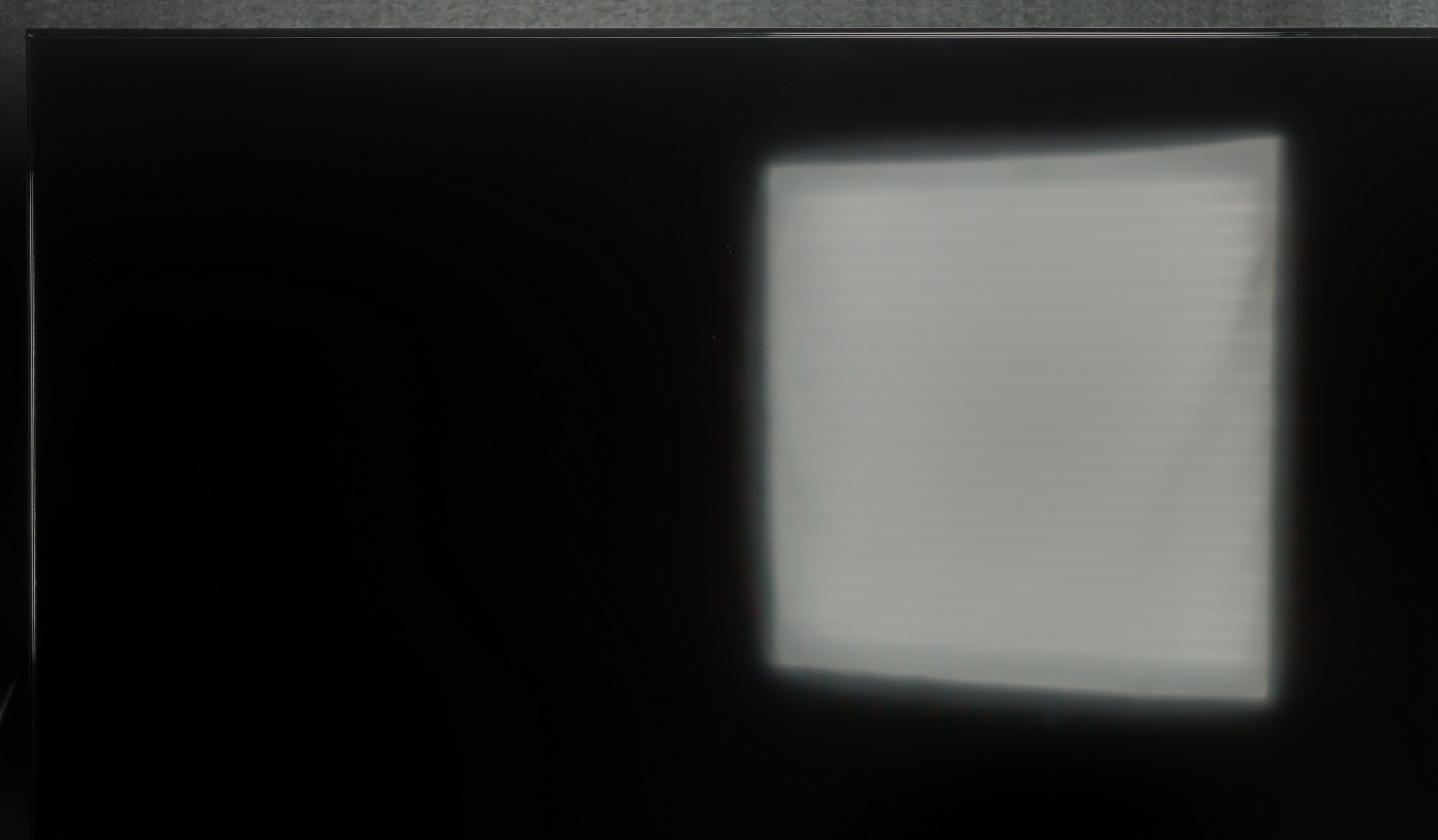

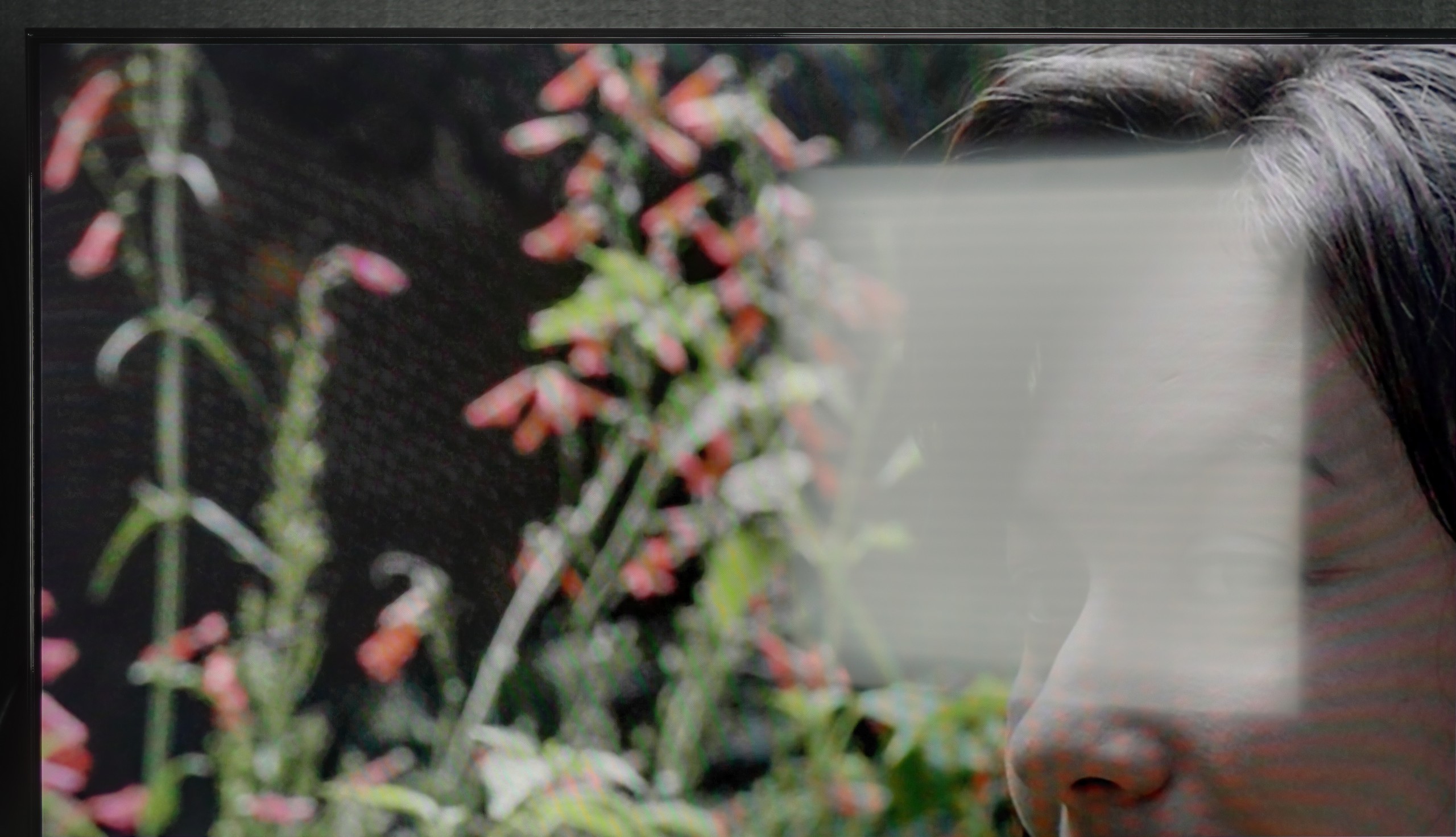
Matrix brightness
Average luminance SDR
SONY BRAVIA 3: 337 cd/m2
Samsung QLED Q80D: 550 cd/m2
The Samsung Q80D television stands out with very good brightness, averaging 550 nits, which is an impressive result, especially as it maintains this brightness across the entire surface of the screen. As a result, the picture is sharp and clearly visible even in bright rooms, which is a big plus when watching television during the day. However, despite the matte coating on the panel, the television struggles somewhat with glare suppression. In bright lighting conditions, unwanted reflections can occur, which may disrupt viewing comfort. This is particularly noticeable when there are light sources in the room that directly hit the screen.
Bravia 3 performs quite well in daylight. The satin coating on the panel effectively reduces reflections, and the colours do not lose their vibrancy when stronger external light hits the screen. As a result, under typical home conditions, with blinds open or in a living room with a larger window, the picture maintains its clarity. However, it's important to remember that this is not a high-brightness TV. The Bravia 3 cannot compete with brighter models, so in very sunny rooms, there are moments when the screen simply doesn't stand out against the intense light. In normal conditions, it handles things without any issues, but in more challenging scenarios, don't expect miracles.
Details about the matrix
Subpixel Structure:

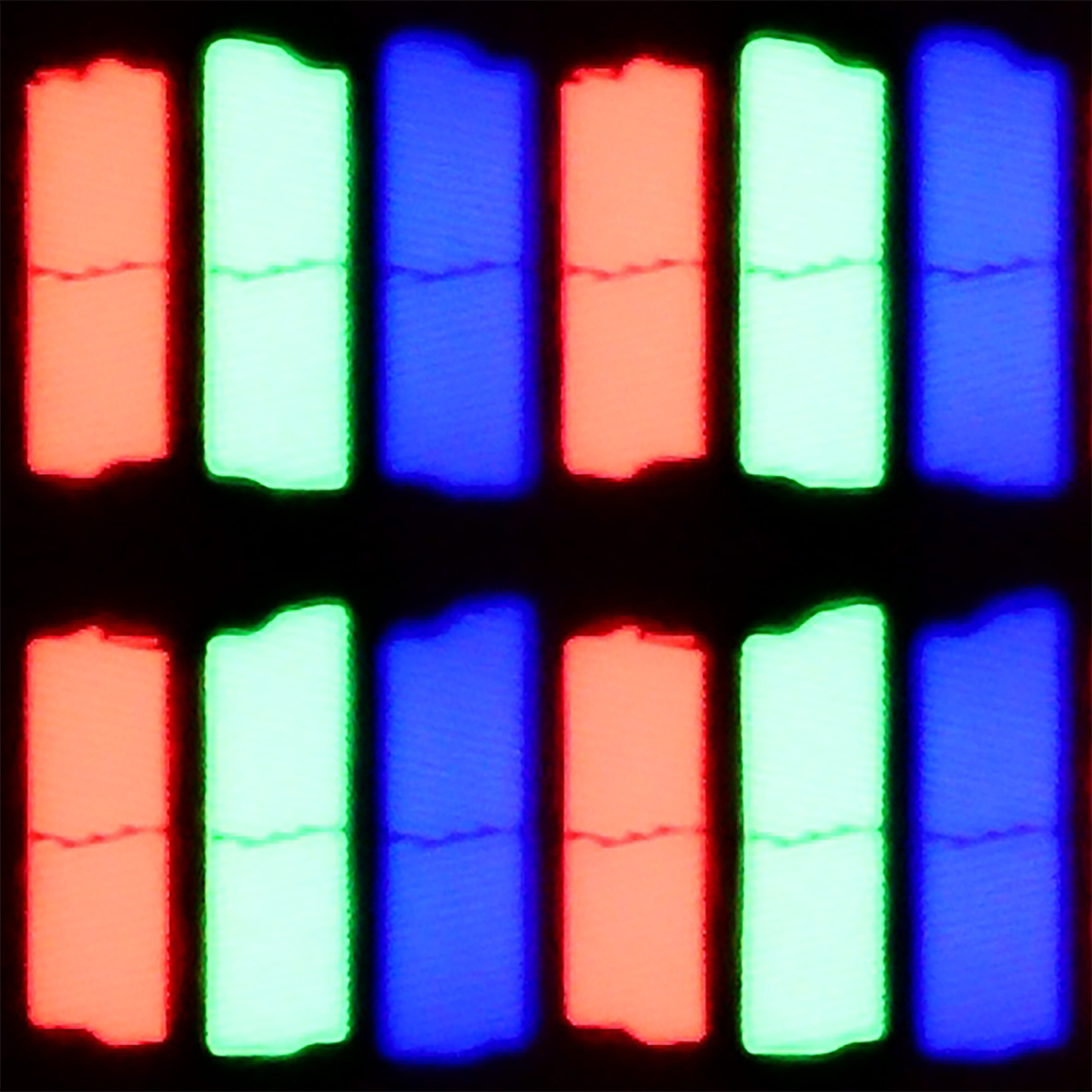
Panel uniformity and thermal imaging:

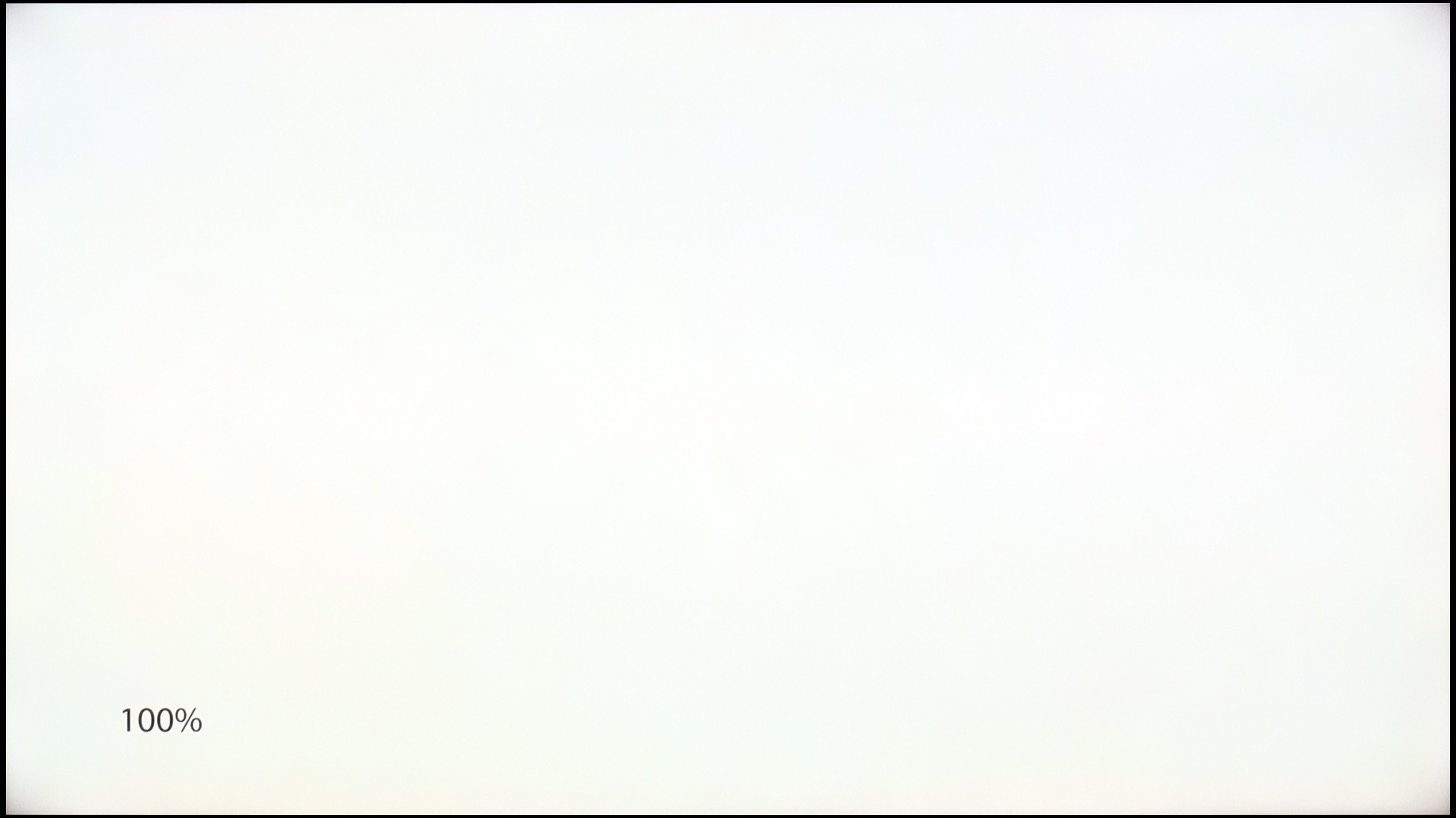
Samsung QLED Q80D
SONY BRAVIA 3
TV features
8/10
6.6/10
- HDMI inputs0 x HDMI 2.0, 4 x HDMI 2.1 48Gbps4 x HDMI 2.0, 0 x HDMI 2.1
- OutputsToslink (Optical audio), eARC (HDMI), ARC (HDMI)Toslink (Optical audio), eARC (HDMI), ARC (HDMI)
- Network InterfacesWi-Fi 2.4GHz, Wi-Fi 5GHz, Ethernet (LAN) 100MbpsWi-Fi 2.4GHz, Wi-Fi 5GHz, Ethernet (LAN) 100Mbps
- TV receptionDVB-T, DVB-T2, DVB-S, DVB-S2, DVB-CDVB-T, DVB-T2, DVB-S, DVB-S2, DVB-C
Classic features:
- Recording to USB (terrestrial TV)
- Recording programming
- Picture in Picture (PiP)
- RF remote control (no need to aim at the screen)
- Backlit remote control
- Teletext
- Audio only mode
- Bluetooth headphones support
- Simultaneous Bluetooth headphones & TV audio
Smart features:
- AirPlay
- Screen mirroring (Windows Miracast)
- Voice search
- Voice search in native language
- Ability to connect a keyboard and mouse


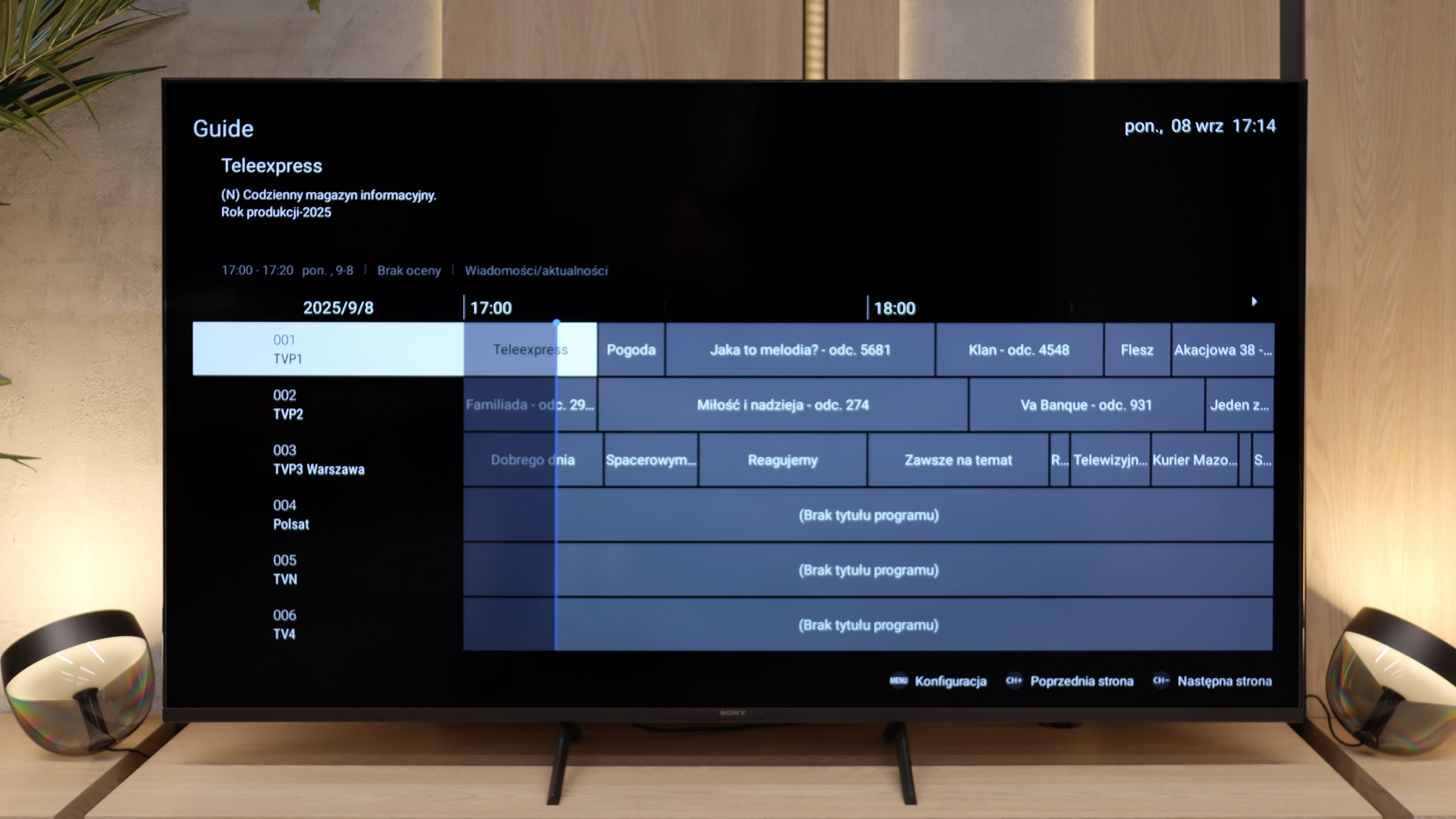
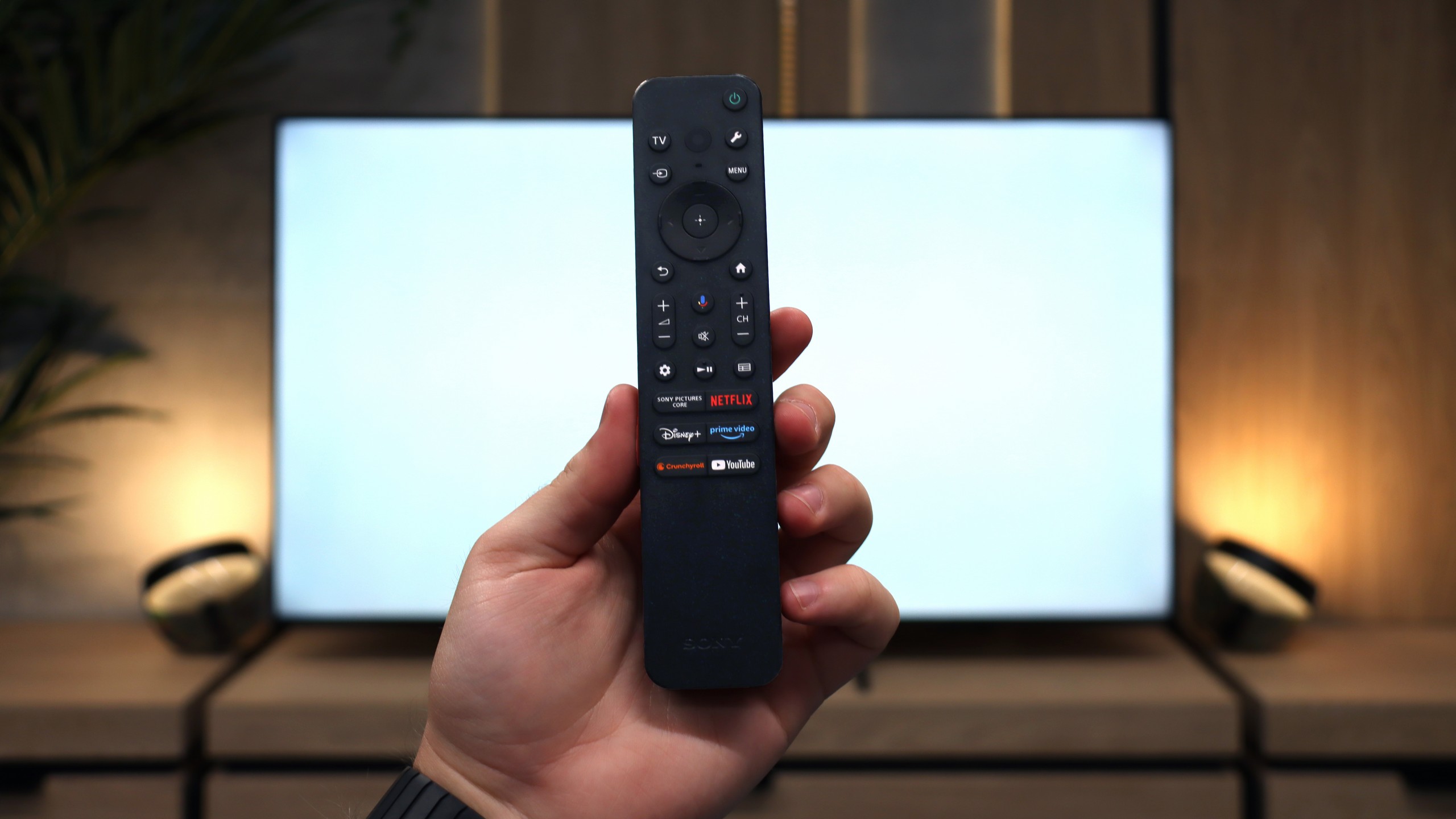
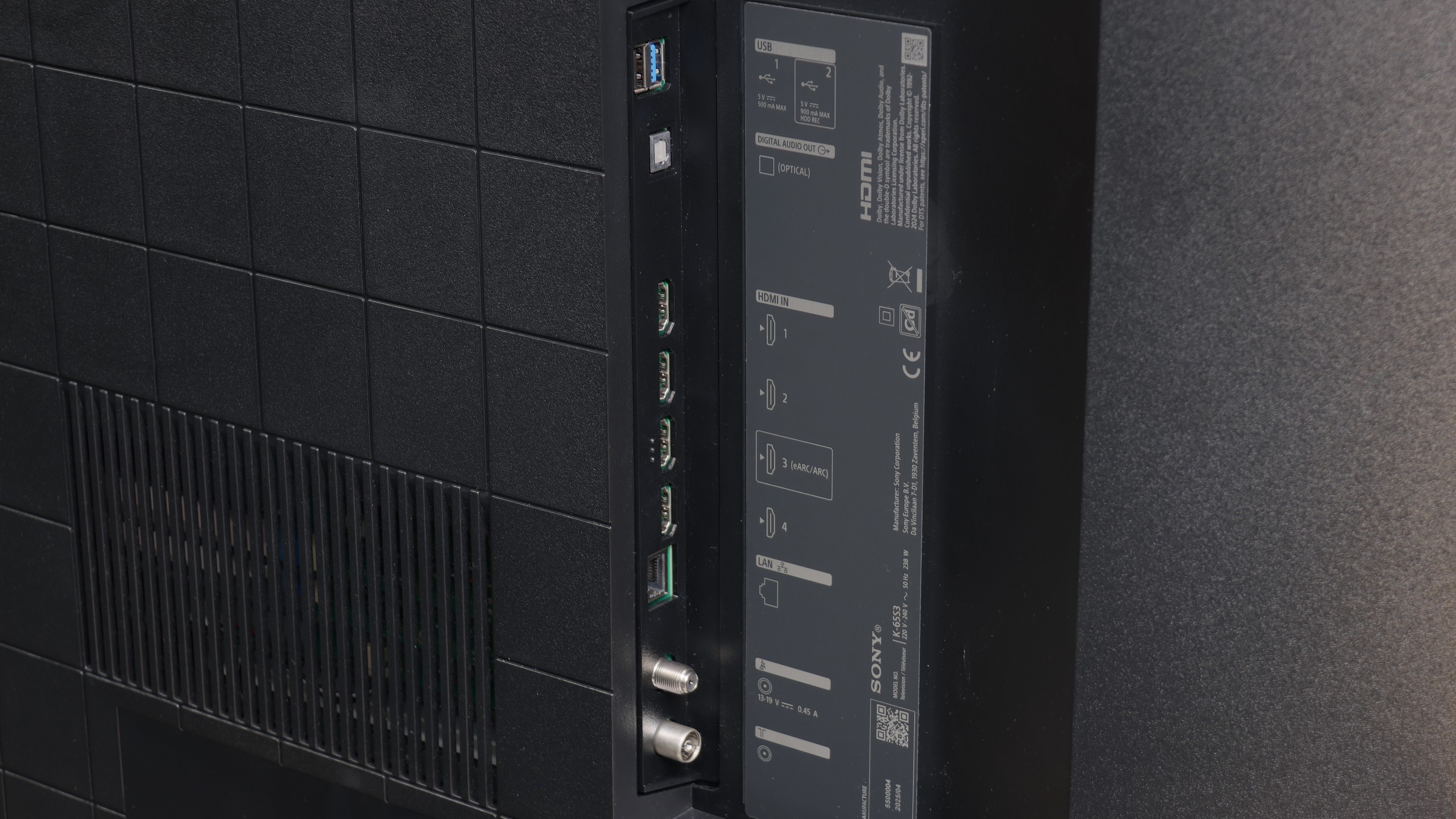
The Samsung Q80D television offers a range of features that significantly enhance user comfort. The Tizen system is an advanced platform that provides users with an intuitive and smooth experience. Thanks to its user-friendly interface, navigating through apps and settings is quick and easy. Tizen supports a rich set of applications, including popular streaming services, allowing access to a wide range of entertainment content without the need for additional devices, and a new feature for 2024 is support for the Polish language. It's also worth mentioning the solar remote control, which is not only eco-friendly but also convenient for everyday use. The solar cell remote can easily control other devices such as home theatres, set-top boxes (e.g., Canal+), or gaming consoles, which is quite a challenge for other manufacturers. Returning to the console, Samsung Q80D offers several features that gamers may appreciate. Firstly, the television supports VRR (Variable Refresh Rate) technology, which enables smoother game display, eliminating issues like tearing and stuttering. Additionally, with low input lag, reactions in games are quick and precise. The Samsung Q80D is also equipped with a Game Bar feature, which allows quick access to key gaming settings without the need to exit the game. From this interface, we can check and adjust parameters like VRR, input lag, frames per second (FPS), as well as screen ratios and sound settings. This means gamers can continuously optimise their experience by adjusting settings according to their current gaming needs. The television supports AirPlay, allowing easy content sharing from Apple devices, and enables connection to various Bluetooth devices such as mice or headphones, increasing its versatility. The only downside is the lack of USB recording support and the fact that the Q80D unfortunately does not support the DTS sound format. This means that if we have content encoded in this format, the device will not be able to properly play back the audio track. This could pose a problem for those using Blu-ray discs or media files that often utilise DTS to provide high-quality surround sound. To achieve complete audio experiences, it may be necessary to use an external player or soundbar that supports this format.
Smart TV Features
The biggest advantage of the Bravia 3 in everyday use is the presence of the Google TV system. Thanks to this, we have access to one of the largest libraries of apps and streaming services, so no matter if someone mainly uses Netflix, Disney+ or smaller platforms, everything is at their fingertips. The Google voice assistant also worked very well, able to respond to our commands quite "smartly". The Google TV system should, in theory, operate very smoothly, as Sony has been implementing it better than many cheaper competitors for years. Unfortunately, in the case of the Bravia 3, it isn't as nice as we would have hoped. During testing, we noticed some slight stutters in the interface, and some features, such as screen mirroring, simply refused to cooperate. One could get the impression that the processor in this model sometimes struggles to manage the demanding system, and not everything works as smoothly as we would expect.
Classic Features
Sony, even in its cheapest series, manages to remind us of its experience with various users. The set comes with two remotes. The first is modern and minimalist, with a small number of buttons, which works great when using apps and Google TV features. The second is a classic remote with a richer set of buttons and a numeric keypad, which will be appreciated especially by older individuals used to traditional solutions. This is a nice nod towards different user groups, and it must be said that Sony has solved it very practically. It’s a shame, however, that compared to the X75WL model, the ability to record content from TV tuners to USB memory has disappeared. The manufacturer has completely abandoned this feature, so if someone was attached to it, they unfortunately won't find it in the Bravia 3.
Playing files from USB
9.1/10
9.6/10
Supported photo formats:
Maximum photo resolution:

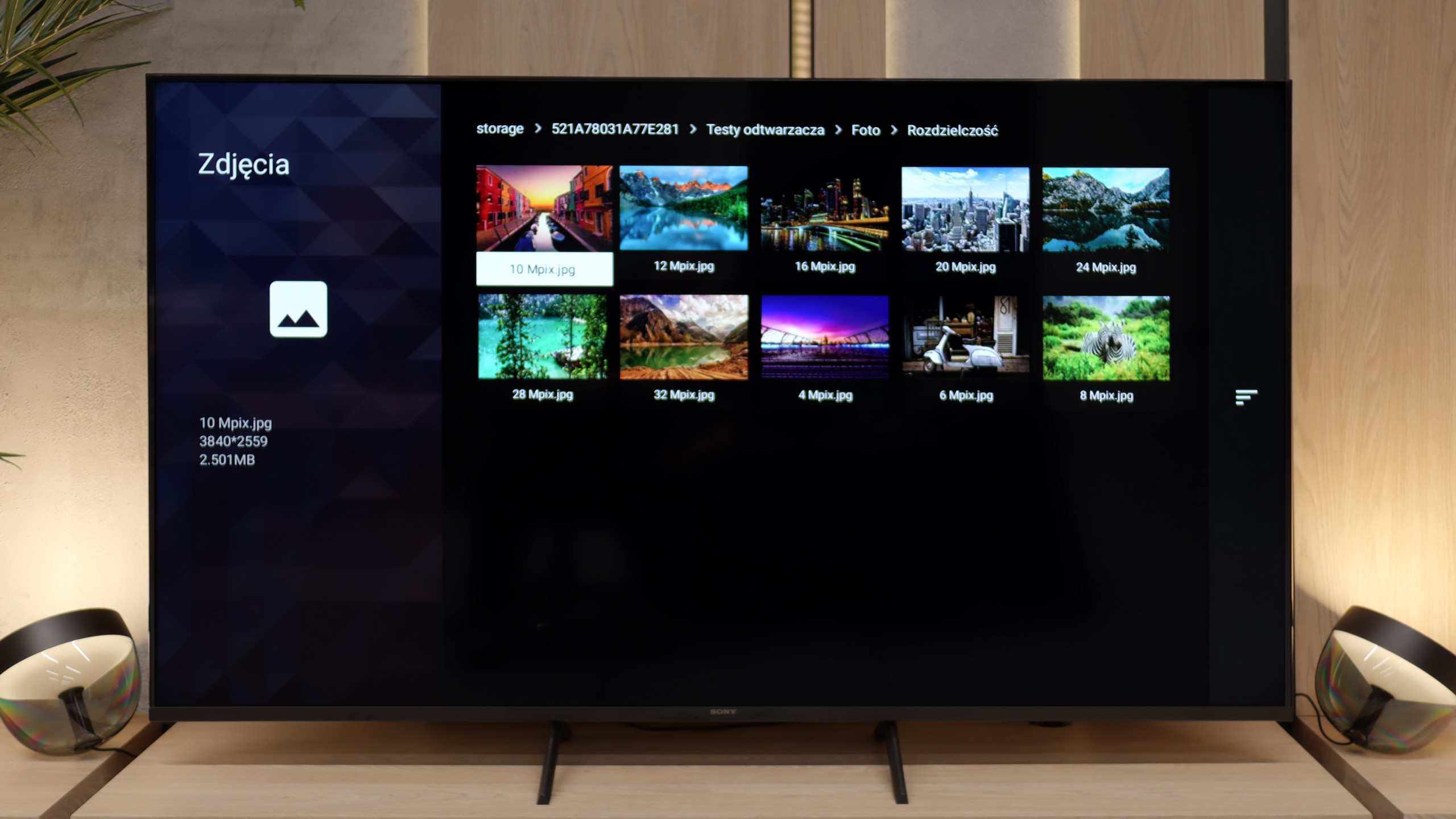
The built-in player in the Samsung Q80D television is definitely one of its strong points. It handles almost all video and audio files that we tested exceptionally well. The only exceptions are the Dolby Vision format, which is not surprising, and less common codecs. On the plus side, it supports Polish characters and offers the ability to customise font colours. On the downside, the TV struggles a bit with photo formats, as it only supports JPEG among the popular ones, while lacking support for formats like PNG or Apple HEIC.
Here Sony has really done an excellent job. The built-in player works quickly and doesn't "fuss" when starting different formats. We didn't need to reach for external applications like VLC, as the TV handled even files that can cause a lot of problems on other models – such as HEIC photos from Apple devices. It's a small detail, but one that shows the manufacturer wanted the user to have a sense of complete convenience. By inserting a movie on a USB stick or photos from a holiday onto an external drive, you can simply plug them in and start watching on the big screen straight away. No fussing, no installing extra software, no searching for workarounds. This is really rare in televisions, and it's fair to say that in this respect, the Bravia 3 truly surprised us pleasantly.
Apps
8.7/10
9.6/10














































Sound
6.6/10
6.5/10
- Maximum volume-88dB
- Dolby Digital Plus 7.1
- Dolby True HD 7.1
- Dolby Atmos in Dolby Digital Plus (JOC)
- Dolby Atmos in Dolby True HD
- DTS:X in DTS-HD MA
- DTS-HD Master Audio
The Samsung Q80D television is equipped with a decent audio system with a power of 40W in a 2.2 configuration, providing quite good sound experiences. This system supports all popular Dolby codecs, allowing for the use of advanced audio formats during movie watching or gaming. However, it is worth noting one drawback: the television does not support DTS functionality. Nonetheless, the lack of this feature can be bypassed by connecting an external audio system, which can significantly improve sound quality and provide a more immersive audio experience. Additionally, Samsung offers a wide portfolio of soundbars that can be integrated with the television, as well as the Q-Symphony system, which allows for sound synchronization between the television and soundbar.
Bravia 3 plays in a rather flat manner, but makes up for it with loudness. It will work flawlessly for watching classic television because the dialogues are clear, and the mid-tones are easily audible. This type of characteristic will be particularly appreciated by older users, who primarily care about speech intelligibility. However, if someone expects something more from the sound, like stronger bass or a wider soundstage, it’s worth reaching for a soundbar despite everything. The TV supports modern codecs, including Dolby Atmos and DTS:X, so an external sound system will easily leverage their potential. This ensures that with a relatively modest expense, one can achieve a much fuller and more engaging sound.
Sound Quality Test
No sound test video
Acoustic Measurements
No acoustic data
88dBC (Max)
75dBC


